
Flora's Last Supper

Flora had to move out, and I volunteered to help her in exchange for a place to stay that wasn't on my boat (she lives lived near the marina). We both had food to use up - so I cooked a nice dinner with duck livers from my freezer, and whipped up a corn chowder from hers.
As one of the (many) rewards for helping her out she kindly donated the extra venison from her freezer (how the other half lives eh?). From which I made a very nice casserole and a curry with peas. Also from her freezer.
SCORE!
Her Dad also fed us on one of the many, many trips to her folks' house with car-loads of boxes. I was impressed by his Cranberry, Stilton, Fennel and Cucumber salad particularly as I find fennel challenging to do nice things with. Unfortunately I didn't take photos, so you'll just have to imagine it.
Duck Livers in Whisky Sauce
fowl main
I allowed Dominic Chapman to guide me,
but really it's not exactly difficult.
Serves 4. Or one Flora and one Karl
Ingredients
- 400g duck livers, cleaned
- 4 shallots or one onion, finely sliced
- large glass whisky I used some of Pete's 16-year-old, double-cask-matured Aberlour
- his Caol Ila Moch was a bit too, er, distinctive
Hi Pete! - chicken stock
- double cream
- 2 panninis, sliced in half lengthways
- ½ tsp honey
Garnish:- chives, chopped
Sweat the shallots until they begin to caramelise.
Deglaze with the whisky and flame off.
Add the chicken stock and bubble to thicken.
Season to taste I added a little honey too since the sauce seemed to want it. Add cream, and bubble until slightly thickened.
Keep warm.
Clean the duck livers, removing any sinews and anything green or black. Fry in olive oil over a high heat turning to to nicely colour all over, and leaving the centre just pink. Season with a little salt, wrap in foil and keep in a warm place for 10 minutes while you prepare the plates.
Generously re-oil the frying pan and fry the cut halves of the panninis until they crisp up. Deglaze the frying pan with white wine, or more whisky or water and add to sauce. Avoid adding any burnt bitterness.
To plate, put the fried pannini slices on a plate, pour over half the sauce, arrange the duck livers on top then finish with a drizzle of the sauce. Decorate with the chopped chives and serve.
Deglaze with the whisky and flame off.
Add the chicken stock and bubble to thicken.
Season to taste I added a little honey too since the sauce seemed to want it. Add cream, and bubble until slightly thickened.
Keep warm.
Clean the duck livers, removing any sinews and anything green or black. Fry in olive oil over a high heat turning to to nicely colour all over, and leaving the centre just pink. Season with a little salt, wrap in foil and keep in a warm place for 10 minutes while you prepare the plates.
Generously re-oil the frying pan and fry the cut halves of the panninis until they crisp up. Deglaze the frying pan with white wine, or more whisky or water and add to sauce. Avoid adding any burnt bitterness.
To plate, put the fried pannini slices on a plate, pour over half the sauce, arrange the duck livers on top then finish with a drizzle of the sauce. Decorate with the chopped chives and serve.
Corn Chowder
soup meat
I thought thickening this soup, rather non-traditionally, with bread rather than potatoes would be nice, particularly as that's what I had to hand.
And it was. Though it can get a bit gloopy if you overdo the bread.
I didn't really measure anything - so you're on your own.
I didn't really measure anything - so you're on your own.
Ingredients
- sweet corn kernels
- bacon, cut into pieces the size of corn kernels
- onion, cut into slices the size of corn kernels
- milk
- bay leaves
- stock
- bread
- double cream
- sweet pepper, cut into pieces the size of corn kernels
Remove the crusts from the bread and put to soak in milk.
Simmer the sweet corn in the stock and bay leaves until tender. Slice away the kernels and reserve. Return the cores to the stock for a while then strain the stock.
Add the soaked bread to the stock with ½/⅓ of the kernels and blend until smooth.
Fry the bacon in butter until it sweats, then add the onion until it softens, then add the peppers.
Season.
Serve with a swirl of double cream.
Simmer the sweet corn in the stock and bay leaves until tender. Slice away the kernels and reserve. Return the cores to the stock for a while then strain the stock.
Add the soaked bread to the stock with ½/⅓ of the kernels and blend until smooth.
Fry the bacon in butter until it sweats, then add the onion until it softens, then add the peppers.
Feel free to deglaze with white wine or liquor.
Add the thickened stock and the whole corn kernels.Season.
Serve with a swirl of double cream.
Really good.
Cranberry, Stilton, Fennel and Cucumber Salad
salad veg
As made by Flora's Dad for a reward dinner for helping her move all her heavy shit back home.
What a loser eh?
Her Dad told me he'd copied it from someone else, but I forget who. It might have been that Yotam Ottolenghi.
I'd use Dunsyre Blue, but good look finding that now the bansturbators have heard there might have been a batch with a bug in it.
What a loser eh?
Her Dad told me he'd copied it from someone else, but I forget who. It might have been that Yotam Ottolenghi.
I'd use Dunsyre Blue, but good look finding that now the bansturbators have heard there might have been a batch with a bug in it.
Ingredients
- fennel, cut into thick matchsticks
- cranberries, whole
- Stilton other blue cheese are available, crumbled
- mixed lettuce leaves
- cucumber, sliced
Dressing:- olive oil
- generous grind of black pepper
- pinch of salt
Arrange nicely.
Dress.
serve.
Dress.
serve.
Excellent, clean flavours.
Venison Casserole
main meat stew
I worked from
Elizabeth Guy's recipe because I had stock, red wine and redcurrant jelly to use up,
but I added the dumplings (to be honest, I'm not sure the mustard in them really works), and skipped her decorative actual redcurrants.
And her bacon.
Serves 2
Ingredients
- 300g venison, diced
- seasoned flour
- 2 small onions, quartered
- 3 mushrooms, quartered
- 3 cloves garlic, quartered
- large glass red wine
- stock
- 1 tbsp redcurrant jelly
For the Dumplings:- 2 oz/8 tbsps suet
- 4 oz/16 tbsps wholewheat flour
- 1 tsp baking soda
- salt & pepper
- 1 tsp mustard powder
- water
Preheat the oven to Gas Mar 2/150°C/300°F.
Put a few tablespoons of well-seasoned flour in a plastic bag without holes! and shake up with the venison pieces.
Fry the quartered onions in olive oil or butter until they begin to caramelise nicely. Add the garlic, cut into reasonably thin pieces. Fry until they begin to colour. Add the mushrooms and fry for a minute until they begin to sweat. Add the frying pan contents to a casserole.
In batches, as necessary, fry the floured venison pieces until they brown, but stop if they begin to leak liquid. Add to the casserole dish.
Deglaze the frying pan with red wine, bubble up with the stock and the redcurrant jelly. When reduced a little, return the casserole ingredients to the pan to reheat. Taste and season. Add more jelly if required. Return to the casserole dish (the sauce should be thickened and only half-submerge the chunky ingredients), cover and cook in the oven for 60 minutes.
Mix the suet, flour, seasoning and mustard powder. Using a knife cut in enough water to cohere the dumplings. Shape and place in the casserole dish.
Cover and continue cooking for 30 minutes.
Put a few tablespoons of well-seasoned flour in a plastic bag without holes! and shake up with the venison pieces.
Fry the quartered onions in olive oil or butter until they begin to caramelise nicely. Add the garlic, cut into reasonably thin pieces. Fry until they begin to colour. Add the mushrooms and fry for a minute until they begin to sweat. Add the frying pan contents to a casserole.
In batches, as necessary, fry the floured venison pieces until they brown, but stop if they begin to leak liquid. Add to the casserole dish.
Deglaze the frying pan with red wine, bubble up with the stock and the redcurrant jelly. When reduced a little, return the casserole ingredients to the pan to reheat. Taste and season. Add more jelly if required. Return to the casserole dish (the sauce should be thickened and only half-submerge the chunky ingredients), cover and cook in the oven for 60 minutes.
Mix the suet, flour, seasoning and mustard powder. Using a knife cut in enough water to cohere the dumplings. Shape and place in the casserole dish.
Cover and continue cooking for 30 minutes.
Absolutely excellent. For boat food :)
South Indian Venison Curry
curry meat
The mustardy vinegar sourness of the curry work very well with the gamey venison.
Serves 4
Ingredients
- 500g boneless venison fillet, diced
- or
- or 500g boneless venison haunch, diced
- 2 tablespoons white wine vinegar
- 1 tablespoon fresh ginger, finely chopped
- 1 teaspoon ground turmeric
- 2 tablespoons rapeseed oil
- 1 large onion, chopped
- 3 garlic cloves, chopped
- 4 green chillies, slit
- 12 curry leaves
- 1 teaspoon black mustard seeds
- 1 teaspoon plain flour
- 1 teaspoon ground coriander
- 1 teaspoon black peppercorns, crushed
- 2 small tomatoes, diced
- salt
Garnish:- coriander leaves, to garnish
Place the meat, vinegar, salt to taste and half the ginger and turmeric in a covered pan or pressure cooker with 250 ml water for 25-30 minutes
if using a pan or 10-12 minutes if using a pressure cooker.
Strain the meat, reserving the stock, and set both aside until required.
Heat half the oil in a pan, add the onion, garlic, green chillies, curry leaves and remaining ginger and sauté for 5-7 minutes, until the onion becomes translucent. Set aside until required.
Heat the remaining oil in another pan and sauté the mustard seeds until they pop. Stir in the flour, ground coriander, peppercorns and remaining turmeric and sauté for a minute, then add the cooked venison. Cook for 3-4 minutes, then add to the onion mixture. Deglaze the pan with the reserved cooking stock I used some red wine first and reduced it, add the tomatoes and reduce. Return the meat mixture and simmer until the sauce thickens. Garnish with coriander and serve with rice or bread.
Heat half the oil in a pan, add the onion, garlic, green chillies, curry leaves and remaining ginger and sauté for 5-7 minutes, until the onion becomes translucent. Set aside until required.
Heat the remaining oil in another pan and sauté the mustard seeds until they pop. Stir in the flour, ground coriander, peppercorns and remaining turmeric and sauté for a minute, then add the cooked venison. Cook for 3-4 minutes, then add to the onion mixture. Deglaze the pan with the reserved cooking stock I used some red wine first and reduced it, add the tomatoes and reduce. Return the meat mixture and simmer until the sauce thickens. Garnish with coriander and serve with rice or bread.
I actually used some pickled jalapeños from a jar instead of fresh chillies,
adding them with the meat to the reduced stock for simmering.
The result wasn't bad, though the meat is not exactly tender.
Good served with Matar Masala.
Good served with Matar Masala.
Matar Masala
Pea Curry
Pea Curry
curry veg
I've seen a few variations on this theme - with the nuts ground with the yoghurt instead of with the tomatoes and the addition of butter,
but this version worked well for me.
Personally I was tempted to fry the spice paste mixed with water before adding the cashew-tomato paste, but the method below worked fine too.
Actually I didn't have any cashews, so used ground almonds instead and it was still very good.
Actually I didn't have any cashews, so used ground almonds instead and it was still very good.
Serves 4
Ingredients
- 1 cup matar/250ml/140g peas I think you'll need 2 cups of frozen peas
- 1 to 1.5 tbsps ginger+green chili paste or ½ inch ginger + 1 to 2 green chilies, crushed to a paste in a mortar-pestle
- 2 tbsp fresh curd/dahi/yogurt, beaten
- 2 tbsp milk powder or dairy whitener
- a generous pinch of asafoetida/hing
- ½ tsp turmeric powder/haldi
- ½ to ¾ tsp red chili powder/lal mirch powder
- 1 tsp cumin powder/jeera
- 1 tsp coriander powder/dhania powder
- ½ tsp garam masala powder
- ½ tsp kasuri methi/dry fenugreek leaves, crushed
- 1 cup water
- 3 tbsp oil
- salt as required
For the Tomato-Cashew Paste:- 3 medium to large tomatoes, 250 grams or 1.5 cups chopped tomatoes
- 10 to 12 cashews/kaju or almonds - or 3 tbsps ground almonds
Whole Garam Masala Spices:- 1 bay leaf/tej patta
- 2 cloves/lavang
- 2 cardamoms/chotti elachi
- 1 inch cinnamon/dal chini
- 1 or 2 single strands of mace/javitri (optional)
First soak 10 to 12 cashews in warm water for 20 to 30 minutes. Or just use some ground almonds!
When the cashews are soaking, steam the fresh peas till they are cooked completely or add frozen peas without cooking. You can steam them in a steamer or pressure cooker. if cooking in a pressure cooker, then cook for 2 whistles Whatever they are :).
Later drain the cashews and add them along with 1.5 cups chopped tomatoes in a blender without adding any water, grind to a fine and smooth paste. Set the ground tomato-cashew paste aside.
Heat 3 tbsp oil in a pan. then add the whole garam masala - 1 bay leaf, 2 cloves, 2 green cardamoms, 1 inch cinnamon, 1 or 2 single strands of mace (optional). Saute till the spice become fragrant.
Then add 1 to 1.5 tbsps ginger+green chili paste. Stir and sauté till the raw aroma of ginger and green chilies go away. Add a generous pinch of asafoetida.
Now add the tomato-cashew paste. stir the paste well. The mixture splutters a lot while sauteing, so cover the pan with a lid and cook this masala mixture, till it stops spluttering. Meanwhile in a small bowl whisk 2 tbsp of fresh full fat curd till smooth. Stir and saute the masala paste, till it thickens and you see oil specks on top and oil releasing from the sides. Then add the ground spices - ½ tsp turmeric powder, ½ to ¾ tsp red chili powder (add as per taste), 1 tsp cumin powder, 1 tsp coriander powder and ½ tsp garam masala powder. Stir and saute for a minute.
Now lower the flame. then add beaten curd.
As soon as you add the curd, stir quickly with a ladle or spatula so that the curd does not curdle. Stir the curd very well with the whole mixture. remember to add beaten curd on a low flame and keep on Stirring quickly and continuously till the entire curd is mixed incorporated in the masala paste.
Add 1 cup water. Then add the cooked green peas. season with salt. stir everything very well. Add 2 tbsp milk powder.
(Instead of milk powder, khoya can be added. but add khoya and saute it once the tomato-cashew paste is done. Stir again.)
Bring the peas masala curry to a simmer on a low to medium flame. Lastly add ½ tsp kasuri methi, which has been crushed. Stir and switch off the flame.
Garnish with coriander leaves and serve matar masala with chapatis, tandoori rotis, naan. you can also serve green peas curry with jeera rice or saffron rice.
When the cashews are soaking, steam the fresh peas till they are cooked completely or add frozen peas without cooking. You can steam them in a steamer or pressure cooker. if cooking in a pressure cooker, then cook for 2 whistles Whatever they are :).
Later drain the cashews and add them along with 1.5 cups chopped tomatoes in a blender without adding any water, grind to a fine and smooth paste. Set the ground tomato-cashew paste aside.
Heat 3 tbsp oil in a pan. then add the whole garam masala - 1 bay leaf, 2 cloves, 2 green cardamoms, 1 inch cinnamon, 1 or 2 single strands of mace (optional). Saute till the spice become fragrant.
Then add 1 to 1.5 tbsps ginger+green chili paste. Stir and sauté till the raw aroma of ginger and green chilies go away. Add a generous pinch of asafoetida.
Now add the tomato-cashew paste. stir the paste well. The mixture splutters a lot while sauteing, so cover the pan with a lid and cook this masala mixture, till it stops spluttering. Meanwhile in a small bowl whisk 2 tbsp of fresh full fat curd till smooth. Stir and saute the masala paste, till it thickens and you see oil specks on top and oil releasing from the sides. Then add the ground spices - ½ tsp turmeric powder, ½ to ¾ tsp red chili powder (add as per taste), 1 tsp cumin powder, 1 tsp coriander powder and ½ tsp garam masala powder. Stir and saute for a minute.
Now lower the flame. then add beaten curd.
As soon as you add the curd, stir quickly with a ladle or spatula so that the curd does not curdle. Stir the curd very well with the whole mixture. remember to add beaten curd on a low flame and keep on Stirring quickly and continuously till the entire curd is mixed incorporated in the masala paste.
Add 1 cup water. Then add the cooked green peas. season with salt. stir everything very well. Add 2 tbsp milk powder.
(Instead of milk powder, khoya can be added. but add khoya and saute it once the tomato-cashew paste is done. Stir again.)
Bring the peas masala curry to a simmer on a low to medium flame. Lastly add ½ tsp kasuri methi, which has been crushed. Stir and switch off the flame.
Garnish with coriander leaves and serve matar masala with chapatis, tandoori rotis, naan. you can also serve green peas curry with jeera rice or saffron rice.
Really good. Really, really good - rich, creamy and buttery, without the use of cream or butter!
Moving Out

Time to move out. Into my boat. And eat up everything I can't take with me.
Much to the relief, and insistence, of the new Dutch lady tenant who's also been my flatmate for a few weeks.
Not that she said as much to my face, what with me living in the next room and all. Oh no. She sent me a complaintive email instead.
Passive-aggressive wimmin eh? What are you going to do?
Like that bag of not-so-mystery meat I've been intending to turn in to a tagine,
the pounds of minced beef perfect for a novelty cottage pie
and another bag of mixed beef and chorizo
(which I use for making my camping spaghetti bolognese),
that I turned into a second cottage pie.Not that she said as much to my face, what with me living in the next room and all. Oh no. She sent me a complaintive email instead.
Passive-aggressive wimmin eh? What are you going to do?
This one made with bacon, onions, thyme, celery, and stock.
But the really exciting thing was the topping - I chopped some preserved (pickled) lime and mixed it with grated cheddar cheese into the mashed potato!
Which is surprisingly tasty, by the way.
While I'm here I might as well mention the coffee bean duck breasts with plum sauce that I made for Kurt. Who doesn't like chocolate sauce.
The duck was a bust - since Bradford offers only duck legs that's what I cooked following the method I previously invented for duck breasts (and those coffee beans did need using up). But since the plum sauce was quite overbearing you couldn't really taste the coffee. We ate it with my Tactical Nuclear Penguin (32%!) which also needed using up. And is quite hard to drink on your own.
My plum sauce was good though!
Mystery Mince Tagine
meat main
I thought I'd try making a mince tagine, with the mysterious meat from the bottom of my freezer.
Or maybe not so mysterious, since it was labelled ½ sirloin/½ brisket.
It was edible, if not overwhelming. Probably tagines work better with bigger chunks of meat.
Or possibly some Ras el Hanout*.
It was edible, if not overwhelming. Probably tagines work better with bigger chunks of meat.
Or possibly some Ras el Hanout*.
*Ras el hanout (Arabic for "top of the shop" or "top shelf") is a blend of the best spices a vendor has in his shop.
The mixture varies depending on who is selling it, but can be a combination of anywhere from 10 to 100 spices.
Commonly used ingredients include cardamom, cumin, clove, cinnamon, nutmeg, mace, allspice, dry ginger, chili peppers, coriander seed, peppercorn,
sweet and hot paprika, fenugreek, and dry turmeric.
Some spices may be particular to the region, such as ash berries, chufa, grains of paradise, orris root, monk's pepper, cubebs, dried rosebud,
fennel seed or aniseed, galangal, long pepper.
Or so says Wikipedia anyway.
Or so says Wikipedia anyway.
Serves 4
Ingredients
- 1kg mystery mince
- olive oil
- 1-2" fresh ginger, grated
- 2 red onions chopped
- 2-3 sticks celery
- 6 garlic cloves
- 24 black olives (half a jar)
- half-dozen dates
- half a dozen almonds, slivered
- 1 marrow
- carrot?
- stock
- salt & pepper
- 2 preserved lemons (use more peel than pulp)
Spices:- some Ras el hanout* if you have any I didn't
- 1 tsp ground or fresh ginger
- 1½ tsp ground cumin
- 1 tbsp ground coriander or crushed seeds
- 1-2 tsp paprika
- 1 tbsp honey
- ½ tsp ground cinnamon
Stir the cumin, ground ginger, coriander and cinnamon into the mince. And Ras el hanout, if you have some. Leave to marinate for a few hours.
Grate the ginger and chop the onion (about ½"). Heat oil in a casserole dish and fry the grated ginger until it begins to catch, then add the red onion and fry until softening. Set aside.
Re-oil the pan and fry the mince in batches to brown. Set aside.
Slice the celery sticks into 2 or 4 (depending on thickness) and cut into pieces. Re-oil the pot and gently fry the celery until it softens a little.
Chop the garlic into reasonable pieces or slivers. Re-oil the pan and fry the garlic until it takes on some colour. Set aside.
Add the reserved ingredients back to the casserole.
Stone the olives, halve, and add to the pot.
Stone the dates, halve, and add to the pot.
Sliver the almonds (you could toast them first, or use flakes) and add to the pot.
Peel the marrow, quarter (or eighth) and remove the core seeds. Cut into chunks. Add to the pot.
Add stock to moisten, paprika, honey, season with salt and pepper, cover and put on a low heat until the pot begins to simmer.
Heat the oven to Gas Mark 2. Put the pot in the oven and cook until tender, but not collapsing, 1½-2 hours.
Remove the pith from one of the lemons, remove the seeds from the other. Slice and add to the tagine casserole. Turn off the oven and leave the pot for 10 minutes for the lemon to infuse.
Serve with couscous or rice.
Grate the ginger and chop the onion (about ½"). Heat oil in a casserole dish and fry the grated ginger until it begins to catch, then add the red onion and fry until softening. Set aside.
Re-oil the pan and fry the mince in batches to brown. Set aside.
Slice the celery sticks into 2 or 4 (depending on thickness) and cut into pieces. Re-oil the pot and gently fry the celery until it softens a little.
Chop the garlic into reasonable pieces or slivers. Re-oil the pan and fry the garlic until it takes on some colour. Set aside.
Add the reserved ingredients back to the casserole.
Stone the olives, halve, and add to the pot.
Stone the dates, halve, and add to the pot.
Sliver the almonds (you could toast them first, or use flakes) and add to the pot.
Peel the marrow, quarter (or eighth) and remove the core seeds. Cut into chunks. Add to the pot.
Add stock to moisten, paprika, honey, season with salt and pepper, cover and put on a low heat until the pot begins to simmer.
Heat the oven to Gas Mark 2. Put the pot in the oven and cook until tender, but not collapsing, 1½-2 hours.
Remove the pith from one of the lemons, remove the seeds from the other. Slice and add to the tagine casserole. Turn off the oven and leave the pot for 10 minutes for the lemon to infuse.
Serve with couscous or rice.
Not too bad, but definitely not as tasty as I was hoping.
The flavours all meld together to end up a bit bland and muddy. Perhaps a bit more spicing?
It probably didn't help that I overcooked the dish slightly - you want to eat it before the marrow completely disintegrates.
2 hours max.
The olives might be added later too - they tend to lose a lot of their flavour if cooked for the whole time.
It probably didn't help that I overcooked the dish slightly - you want to eat it before the marrow completely disintegrates.
2 hours max.
The olives might be added later too - they tend to lose a lot of their flavour if cooked for the whole time.
Oriental Cottage Pie
main meat
My oriental twist on cottage pie.
Like Shepherd's pie. Only with beef.
Like Shepherd's pie. Only with beef.
Serves 4
Ingredients
- 1lb minced beef
- 2 smallish quite finely chopped onion
- thyme
- 1 carrot
- 1 stick celery
- stock I used beef demi-glace
- couple glasses red wine
- Teriyaki sauce at least, that's what I think it was - something soy-sauce-based I'd made up anyway
- 3 baking potatoes
- butter
- milk
Preheat the oven to Gas mark 5/180°C.
Prick the potatoes and put in the oven for an hour.
Chop the onion quite finely and fry gently with some thyme leaves until caramalising at the edges. Set aside.
Peel and chop the carrot quite finely and fry gently until beginning to shrivel. Chop the celery quite finely and add to the carrot. Continue frying until you see a hint of collapse and set aside.
Fry the beef until nicely browned. Set aside.
Deglaze the pan with red wine, bubble, add the stock and teriyaki or soy sauce and bubble until thickened.
Add all the other ingredients and cook, partially covered, for half an hour. Allow to dry out towards the end.
Pour the meat mixture into a casserole dish. Mash the baked potatoes with plenty of butter and a few dashes of milk. Season.
Cover the meat with the mash and run a fork across the surface to create lines. Dot with butter and bake for half an hour until the top begins to darken and crisp.
Chop the onion quite finely and fry gently with some thyme leaves until caramalising at the edges. Set aside.
Peel and chop the carrot quite finely and fry gently until beginning to shrivel. Chop the celery quite finely and add to the carrot. Continue frying until you see a hint of collapse and set aside.
Fry the beef until nicely browned. Set aside.
Deglaze the pan with red wine, bubble, add the stock and teriyaki or soy sauce and bubble until thickened.
Add all the other ingredients and cook, partially covered, for half an hour. Allow to dry out towards the end.
Pour the meat mixture into a casserole dish. Mash the baked potatoes with plenty of butter and a few dashes of milk. Season.
Cover the meat with the mash and run a fork across the surface to create lines. Dot with butter and bake for half an hour until the top begins to darken and crisp.
Really good.
Plum Sauce
sauce veg vegan
Of the kind you might serve with a roast duck breast.
The herby sourness of the Vermouth really makes the sauce work with the sweetness of the plums.
The herby sourness of the Vermouth really makes the sauce work with the sweetness of the plums.
Serves 2
Ingredients
- 2 onions, finely chopped
- Vermouth
- 3 ripe plums, seed removed, chopped
- about ½ tsp honey
- salt & pepper
Fry the onions in butter until well caramelized. Cook gently towards the end to prevent burning.
Deglaze the pan with a good splash of Vermouth.
Add the chopped plums and sufficient water to moisten the pan.
Simmer gently until the plums are beginning to fall apart.
Push through a sieve.
Simmer to reduce.
Taste and season with salt, pepper if you like and a little honey.
You might want to experiment with adding star anise, rice wine vinegar and soy sauce if you're looking for a more oriental twist.
A Fishy Supper

Another dinner for Flora. This time her demands were simple: So fish it is then.
Some quick-fried prawns with a Horseradish Marmalade Sauce to start, then speedy fishy parcels to follow, with instantly grilled pak choy and a fruity risotto-like orzo pasta dish that was not only fast but more tasty than it had any right to be.
The delicious chocolate-flavoured dessert is something I made earlier, and just needed reducing to thicken a sauce for serving.
With vanilla ice cream.
Which I bought in a shop.
Coconut Prawns
starter fish
There's a lot of versions of this concept online, and I found this one.
The fishmonger had some nice-looking king prawns, so I made it with those instead, which worked just brilliantly. In any case, most of these online recipes are American, and those guys call every decapodal crustacean shrimp. Probably they'd call the prawns I used Jumbo Shrimp?
I think you want to use moist, sweetened shredded coconut rather than the normal desiccated variety which will be a bit too hard and dry.
You definitely don't want the oil to be too hot or the sugars in the coconut will burn. You want the prawns to turn golden brown in just a couple of minutes.
The fishmonger had some nice-looking king prawns, so I made it with those instead, which worked just brilliantly. In any case, most of these online recipes are American, and those guys call every decapodal crustacean shrimp. Probably they'd call the prawns I used Jumbo Shrimp?
I think you want to use moist, sweetened shredded coconut rather than the normal desiccated variety which will be a bit too hard and dry.
You definitely don't want the oil to be too hot or the sugars in the coconut will burn. You want the prawns to turn golden brown in just a couple of minutes.
Serves 4.
Or a Couple of Pigs.
Ingredients
- 12 king prawns, or 24 shrimp
- 3 cups oil for frying
- ¼ cup plain flour
- 2 cups flaked coconut
For The Batter:- 1 egg
- ½ cup all-purpose flour
- ⅔ cup beer
- 1½ teaspoons baking powder
In medium bowl, combine egg, ½ cup flour, beer and baking powder. You're looking for a reasonably thin batter.
Place ¼ cup well-seasoned flour and the coconut in two separate bowls.
Hold the prawns by the tail, and dredge in flour, shaking off excess flour. Dip in egg/beer batter; allow excess to drip off.
Roll the prawns in coconut, and place on a baking sheet lined with wax paper or foil.
Refrigerate for 30 minutes. Meanwhile, heat oil to 350°F (175°C) in a deep-fryer.
Fry prawns in batches: cook, turning once, for 2 to 3 minutes, or until golden brown.
Using tongs, remove prawns to paper towels to drain.
Serve warm with your favourite dipping sauce.
Place ¼ cup well-seasoned flour and the coconut in two separate bowls.
Hold the prawns by the tail, and dredge in flour, shaking off excess flour. Dip in egg/beer batter; allow excess to drip off.
Roll the prawns in coconut, and place on a baking sheet lined with wax paper or foil.
Refrigerate for 30 minutes. Meanwhile, heat oil to 350°F (175°C) in a deep-fryer.
Fry prawns in batches: cook, turning once, for 2 to 3 minutes, or until golden brown.
Using tongs, remove prawns to paper towels to drain.
Serve warm with your favourite dipping sauce.
Really excellent.
You can serve with a lightly-dressed mixed-leaf salad. Perhaps one with a few oven-dried tomatoes in it?
You can serve with a lightly-dressed mixed-leaf salad. Perhaps one with a few oven-dried tomatoes in it?
Horseradish and Marmalade Sauce
sauce jam veg vegan
I used some freshly-grated horseradish in my sauce,
though probably most of these online (and American) recipes are referring to prepared horseradish,
which is just grated horseradish preserved in vinegar.
I didn't measure anything out so I don't know how close it was to the suggested quantities below, which seems a bit spicy to me. It's easy to overdo the mustard.
I also warmed my sauce up gently to serve as a dressing with deep-fried prawns, but I'm sure it would have been fine better? cold, and you definitely don't want to over-cook it, which will rob the horseradish of its pungency.
I've seen a version that replaces the 2 tablespoons of mustard with a tablespoon of rice vinegar and some crushed red pepper.
I didn't measure anything out so I don't know how close it was to the suggested quantities below, which seems a bit spicy to me. It's easy to overdo the mustard.
I also warmed my sauce up gently to serve as a dressing with deep-fried prawns, but I'm sure it would have been fine better? cold, and you definitely don't want to over-cook it, which will rob the horseradish of its pungency.
I've seen a version that replaces the 2 tablespoons of mustard with a tablespoon of rice vinegar and some crushed red pepper.
Makes a Cup
Ingredients
- 1 cup orange marmalade
- 2-3 tablespoons horseradish
- 2 tablespoons Dijon mustard
Blend the marmalade, grated horseradish and mustard in the quantities above, or to taste.
Loosen with a little water, orange or lime juice, or vinegar if required.
A good dip, though easy to get the quantities wrong and make it slightly nauseating.
Oven-Dried Tomatoes
ingredient snack veg vegan
A bit like what Nigella calls moonblush tomatoes.
Except these ones aren't left overnight, and dry out in a couple of hours.
Ingredients
- cherry tomatoes though you can use larger ones
- sea salt
- sugar
- thyme or oregano, if you can find it
- olive oil
Preheat the oven to 220°C/gas mark 7/450°F.
Slice the tomatoes in half cross-ways and sit them cut-side up in an oven dish.
Sprinkle generously with salt, herbs don't overdo the herbs and sugar if you like.
Drizzle with olive oil.
Put them in the oven, give them a few minutes (up to 15) and then turn the oven down to gas mark 1-2 or off if you're following Nigella and leaving them overnight. Leave them to bake for a couple of hours, adjusting the oven temperature if they start to burn or don't seem to be shrivelling.
They're ready once they've shrunk to about half their original size, by which time their flavour will be nicely concentrated.
Slice the tomatoes in half cross-ways and sit them cut-side up in an oven dish.
Sprinkle generously with salt, herbs don't overdo the herbs and sugar if you like.
Drizzle with olive oil.
Put them in the oven, give them a few minutes (up to 15) and then turn the oven down to gas mark 1-2 or off if you're following Nigella and leaving them overnight. Leave them to bake for a couple of hours, adjusting the oven temperature if they start to burn or don't seem to be shrivelling.
They're ready once they've shrunk to about half their original size, by which time their flavour will be nicely concentrated.
Excellent for stuffing fish cooked en papillote, as a base for pasta sauce, for chopping into salads, or even just snacking on.
Witch Sole with Oven-Dried Tomatoes, Olives and Herbs En Papillote
main fish
The fishmonger had some nice fresh fillets of witch sole, so that's what bought.
I had some ready-prepared oven-dried tomatoes, and some cured black olives, and since Flora's place, where I was doing the cooking, didn't provide any other herbs or any tapenade (which would have been preferred) I went with what I had.
I had some ready-prepared oven-dried tomatoes, and some cured black olives, and since Flora's place, where I was doing the cooking, didn't provide any other herbs or any tapenade (which would have been preferred) I went with what I had.
One Parcel per Person
Ingredients
- 1 fillet with sole
- a few oven-dried tomato halves
- a few halved black olives
- a few tarragon leaves or other herbs
- a drizzle of gin
Cut a circle of greaseproof paper and lay a circle of aluminium foil on top (or just use the paper if you're feeling brave).
Fold in half to get a crease in them, lay in the filling ingredients (off-centre to allow for folding), drizzle with gin (or other liquor), fold carefully and seal thoroughly.
Put into your hottest oven for 15 minutes or until the package puffs up.
Remove immediately.
Fold in half to get a crease in them, lay in the filling ingredients (off-centre to allow for folding), drizzle with gin (or other liquor), fold carefully and seal thoroughly.
Put into your hottest oven for 15 minutes or until the package puffs up.
Remove immediately.
Good.
Serve with something light which will soak up the small amount of juices, like a fruity Orange-Lemon Orzo.
Serve with something light which will soak up the small amount of juices, like a fruity Orange-Lemon Orzo.
Grilled Pak Choy
side veg vegan
Pak choy grills well, like chicory, but without the edge of bitterness.
Though it can turn a bit leathery.
Allow one small bulb per person
Ingredients
- pak choy
- olive oil
- soy sauce
- garlic, fruit zest, herbs, olive slivers or other flavours
Slice the pak choy in half and lay on a grill pan.
Drizzle with olive oil, soy sauce, give them a grinding of salt and pepper, and scatter with any choice of herbs or zest.
Grill until blackening at the edges and tender in the centre If you can!
Try and arrange the grill so that the thick root end of the stalks are either nearer the heat or closest to the centre of the grill.
Drizzle with olive oil, soy sauce, give them a grinding of salt and pepper, and scatter with any choice of herbs or zest.
Grill until blackening at the edges and tender in the centre If you can!
Try and arrange the grill so that the thick root end of the stalks are either nearer the heat or closest to the centre of the grill.
Even the charred bits are delicious, but it's hard to get the stalk cooked through and tender without incinerating the leaves.
Pears Poached in Chocolate
dessert veg vegan
A recipe I found in Tom Kitchin's Kitchin Suppers
while looking for dinner ideas in Waterstones bookshop.
Serves 4
Ingredients
- 4 medium ripe pears, preferably Comice, Williams or another roundish variety
Poaching Liquor:- 400ml water
- 100g caster sugar
- 100g good-quality dark chocolate (70% cocoa solids), in pieces
- juice of ½ lemon
For the poaching liquor, put the water, sugar, chocolate and lemon juice into a medium heavy-based saucepan.
Heat gently, stirring occasionally, until the chocolate is completely melted, then allow to simmer for 10 minutes.
Meanwhile, carefully peel the pears, keeping their shape and leaving the stems intact. Scoop out the core and seeds from the base you can work your way in from the bottom using a melon baller, or just cut out a conical section with a small knife. Cut a thin sliver off the bases so the pears will stand upright.
To poach the pears, gently lower them into the simmering poaching liquid. Cover with a piece of parchment paper and weight down with a heatproof plate that fits inside the pan, to keep them submerged. This is really only to prevent the pear from browning, and since the sauce is very brown already I'm not sure it makes a whole lot of difference. I sealed the pot with cling-film which seemed to cook the pears perfectly well. Poach gently for 30-40 minutes, or until the pears are just soft, but retaining their shape.
Serve the warm pears with the hot chocolate sauce poured over and a scoop of vanilla ice cream on the side.
Meanwhile, carefully peel the pears, keeping their shape and leaving the stems intact. Scoop out the core and seeds from the base you can work your way in from the bottom using a melon baller, or just cut out a conical section with a small knife. Cut a thin sliver off the bases so the pears will stand upright.
To poach the pears, gently lower them into the simmering poaching liquid. Cover with a piece of parchment paper and weight down with a heatproof plate that fits inside the pan, to keep them submerged. This is really only to prevent the pear from browning, and since the sauce is very brown already I'm not sure it makes a whole lot of difference. I sealed the pot with cling-film which seemed to cook the pears perfectly well. Poach gently for 30-40 minutes, or until the pears are just soft, but retaining their shape.
You can pre-cook the dish to this point and keep it for a day or two.
Just re-heat then continue.
Using a slotted spoon, lift the cooked pears out of the pan onto a warm plate.
Increase the heat to medium and let the poaching liquor bubble steadily until reduced to a glossy chocolate sauce with a syrupy consistency.Just re-heat then continue.
Serve the warm pears with the hot chocolate sauce poured over and a scoop of vanilla ice cream on the side.
Apparently it is possible to add too much sugar. Even for Flora - a girl!
But I really liked it.
But I really liked it.
Brescape!

Finally free of the shackles of the European Union!
The people have spoken, though perhaps someone should tell the BBC, who seem to be continuing to run their propagandists Bremain campaign as if the great unwashed had not voted at all.
As the BBC's head of Political Research David Cowling puts it Who are these ghastly people and where do they come from?.
What does slightly concern me though, is where our EU spivs and quangocrats, the Kinnocks, Ashtons and Mandelsons of our political world are going to do their troughing now the Euro-gravy train is pulling out the of the British station. Like lice re-infesting a new-grown head of hair they might have to resume leeching the contents of our native public purse, and having accustomed themselves to European levels of corruption, how could we possibly afford to support them?
Anyway, my sailing companion Gordon's wife Kim told me about a delicious way the Spaniards have of serving their version of black pudding
(morcilla) stuffed into green chilli peppers and roasted.
I thought I'd better give them a go while it's still possible to get hold of exotic European meats.
I was recommended these particular puddings, which I froze, while I was shopping for crocodile (tastes like crisp chicken, in case you were wondering)
at George Bower.
I remember distinctly because while cooking my crocodile (and that's a phrase you don't hear too often) I had to endure more hours of ghast from Radio4 - First a session of anthropological indoctrination from a show called "Natural Histories: Monkeys and Apes" in which various zoologists and monkey experts jeered at the ignorance of Victorian depictions of and attitudes towards primates, then proceeded, with no obvious sign of irony, to explain how essential it now was for them to use modern propaganda techniques to re-educate people in their modern and 'correct' understanding of the true nature of our anthropoid relatives.
This was followed by a tedious episode of "Stop The Week I Want To Get Off", during which psychologists and psychoanalysts tried to convince me that mental and psychosomatic disorders were every bit as deserving of sympathy and expensive treatments (mainly their own) as physical disabilities.
And they wonder why I drink.
I remember distinctly because while cooking my crocodile (and that's a phrase you don't hear too often) I had to endure more hours of ghast from Radio4 - First a session of anthropological indoctrination from a show called "Natural Histories: Monkeys and Apes" in which various zoologists and monkey experts jeered at the ignorance of Victorian depictions of and attitudes towards primates, then proceeded, with no obvious sign of irony, to explain how essential it now was for them to use modern propaganda techniques to re-educate people in their modern and 'correct' understanding of the true nature of our anthropoid relatives.
This was followed by a tedious episode of "Stop The Week I Want To Get Off", during which psychologists and psychoanalysts tried to convince me that mental and psychosomatic disorders were every bit as deserving of sympathy and expensive treatments (mainly their own) as physical disabilities.
And they wonder why I drink.
Morcilla Stuffed Peppers
Black pudding stuffed peppers
meat main
Morcilla is a strongly flavoured Spanish pork black pudding, usually made incorporating onions, rice, pine nuts or even almonds.
You can stuff any pepper you like for this recipe - bell peppers would be OK, those long sweet pointed red varieties like Romano or Ramiro are excellent, or you could use a chilli variety with a bit more kick like a Poblano.
You'll need about 250g of sausage to fill a bell pepper, 125g for a Romano, and maybe 80g for a Poblano.
If you like you can bulk out the sausage by taking it out of the skin, crumbling it and mixing it with more? cooked rice or pine nuts.
You could also add flavourings like sherry, spices, herbs, lemon juice etc.
You can stuff any pepper you like for this recipe - bell peppers would be OK, those long sweet pointed red varieties like Romano or Ramiro are excellent, or you could use a chilli variety with a bit more kick like a Poblano.
You'll need about 250g of sausage to fill a bell pepper, 125g for a Romano, and maybe 80g for a Poblano.
If you like you can bulk out the sausage by taking it out of the skin, crumbling it and mixing it with more? cooked rice or pine nuts.
You could also add flavourings like sherry, spices, herbs, lemon juice etc.
Serve 1 Pepper per Person
Ingredients
- morcilla black pudding
- peppers
Slice up the black pudding, remove the skin, and stuff the peppers with the slices.
If the skin is natural you can leave it on the last piece which covers the mouth of the pepper so it can crisp up in the heat.
Place the stuffed peppers in a shallow oiled baking tin, drizzle with more oil, pour in a little stock or water.
Bake at Gas Mark 5 for 30-40 minutes until they're cooked through, and the filling starts to ooze out.
Serve with a poached egg and couscous or curd rice.
And maybe some ginger or mustard green beans.
Place the stuffed peppers in a shallow oiled baking tin, drizzle with more oil, pour in a little stock or water.
Bake at Gas Mark 5 for 30-40 minutes until they're cooked through, and the filling starts to ooze out.
Serve with a poached egg and couscous or curd rice.
And maybe some ginger or mustard green beans.
Greasy but good!
YACCC

Yet Another Celery Cauliflower Combo.
Funny I keep coming back to these flavours - probably because it's hard to think of things to do with the rest of that whole head of celery, when you only needed 3 sticks. Quite why I always seem to have a cauliflower to hand in such circumstances escapes me.
As a part of my emptying the fridge and freezer project, since small boats don't have freezers, I found a fortuitous way to combine a very old jar of homemade Thai Chilli Sauce and some frozen belly pork.
It turned out less burnt than it looks, though I did overcook it.
You can eat these two dishes together, as photographs do testify, but I don't particularly recommend it.
Funny I keep coming back to these flavours - probably because it's hard to think of things to do with the rest of that whole head of celery, when you only needed 3 sticks. Quite why I always seem to have a cauliflower to hand in such circumstances escapes me.
As a part of my emptying the fridge and freezer project, since small boats don't have freezers, I found a fortuitous way to combine a very old jar of homemade Thai Chilli Sauce and some frozen belly pork.
It turned out less burnt than it looks, though I did overcook it.
You can eat these two dishes together, as photographs do testify, but I don't particularly recommend it.
Belly Pork in Thai Chilli Sauce
Moo Adovada
Moo Adovada
main meat crockpot
I based this on Carne Adovada except using Thai chilli sauce as the base,
though it's not too dissimilar to a
Southern Thai Stewed Belly Pork (Moo Hong (หมูฮ้อง)).
Perhaps I should have called it Carne Hong? Or Moo Adovada?
Yep, definitely the Moo thing.
Now, to marinate or not to marinate?
To sear or not to sear?
Why not have both? Brown the pieces of belly pork first, allow to cool, then marinate.
Then casserole.
Hmmm, on second thoughts - what would that achieve? The point of marinating is to tenderize the meat before cooking, so there doesn't seem much point tenderizing after it's been (partially) cooked?
I know, I'll try some pieces of both - but cut differently, the seared ones bias-sliced like lozenges instead of cubes, so I can compare them when eating.
Yep, definitely the Moo thing.
Now, to marinate or not to marinate?
To sear or not to sear?
Why not have both? Brown the pieces of belly pork first, allow to cool, then marinate.
Then casserole.
Hmmm, on second thoughts - what would that achieve? The point of marinating is to tenderize the meat before cooking, so there doesn't seem much point tenderizing after it's been (partially) cooked?
I know, I'll try some pieces of both - but cut differently, the seared ones bias-sliced like lozenges instead of cubes, so I can compare them when eating.
And the result?
Well, I think I should probably have braised the pork for less time - I left it in the slow-cooker on low for a full 12 hours and the meat was a bit on the stringy side. I then cooked it for another day, by which time the meat was a little more tender, but had less taste. I see that Moo Hong recipes only cook for an hour or so.
And the lozenge chunks? The pieces seared then marinated were possibly darker-looking, but were definitely no improvement on those I simply marinated.
Well, I think I should probably have braised the pork for less time - I left it in the slow-cooker on low for a full 12 hours and the meat was a bit on the stringy side. I then cooked it for another day, by which time the meat was a little more tender, but had less taste. I see that Moo Hong recipes only cook for an hour or so.
And the lozenge chunks? The pieces seared then marinated were possibly darker-looking, but were definitely no improvement on those I simply marinated.
Oh, and do par-cook the beans first before adding them, lest they turn out like bullets.
Ingredients
- a slab of belly pork
- a nice pot of Thai Sweet Chilli Sauce that you made earlier. A lot earlier.
- garlic cloves, peeled, whole
- a handful of black well, pinto beans
- possible additions? Carrots, potatoes, small onions or shallots,dumplings?
Cut the pork belly into decent (1½") chunks.
Smear well with the Thai chilli sauce and leave to marinate in a dish or freezer bag for a day or two.
Soak a handful of black (or pinto!) beans overnight. Rinse well, then simmer in a little water or stock until tender but not collapsing.
Set aside.
Put the pork belly and Thai chilli sauce marinade into a slow cooker. Add a few splashes of rice wine to lubricate (use it to rinse out the marinade dish). Add the beans and a few whole, peeled garlic cloves.
Turn on and braise for 2-4 hours until tender.
Soak a handful of black (or pinto!) beans overnight. Rinse well, then simmer in a little water or stock until tender but not collapsing.
Set aside.
Put the pork belly and Thai chilli sauce marinade into a slow cooker. Add a few splashes of rice wine to lubricate (use it to rinse out the marinade dish). Add the beans and a few whole, peeled garlic cloves.
Turn on and braise for 2-4 hours until tender.
Well, I didn't try adding any dumplings or any of the other options,
though I think they could have worked well. Perhaps flavoured with coriander, or Thai basil?
Otherwise eat with rice or couscous.
Otherwise eat with rice or couscous.
Cauliflower and Celery Bake
veg side
Wondering what to do with that leftover head of celery (minus the three stalks)?
YACCC!
YACCC!
Serves 4
Ingredients
- butter
- 1 cauliflower
- 6 garlic cloves, peeled, halved if large
- 1 head celery
- 2-3 glasses Ricard optional?
- 300g yoghurt
- small bunch thyme
- 3 bay leaves
For the Breadcrumbs:- 3-4 slices bread, crusts removed
- parsley
- red onion
- butter, melted
- garlic, crushed
Cut the cauliflower into florets, not too large, and chop the celery into fat slices.
Heat a generous amount of butter in a large pan over fairly high heat and throw in the cauliflower florets. Fry until they take on some colour, then add the garlic cloves and shake around. Then add the celery pieces and shake around. Fry until the celery starts to break down a little, then de-glaze the pan with Ricard if using, season, add the yoghurt, cover tightly and cook over very low heat until everything is cooked and softened.
Set aside.
Prepare the breadcrumbs: process or grate the bread, mince the garlic, onion and herbs and melt the butter. Mix everything except the butter then drizzle in the butter, stirring the breadcrumbs until they begin to clump together. (This will take quite a lot of butter).
Preheat the oven to gas mark 4.
Scoop the cauliflower/celery mix into an ovenproof dish. Cover with a layer of breadcrumbs and bake until the breadcrumbs are golden and the contents are heated through.
Heat a generous amount of butter in a large pan over fairly high heat and throw in the cauliflower florets. Fry until they take on some colour, then add the garlic cloves and shake around. Then add the celery pieces and shake around. Fry until the celery starts to break down a little, then de-glaze the pan with Ricard if using, season, add the yoghurt, cover tightly and cook over very low heat until everything is cooked and softened.
Set aside.
Prepare the breadcrumbs: process or grate the bread, mince the garlic, onion and herbs and melt the butter. Mix everything except the butter then drizzle in the butter, stirring the breadcrumbs until they begin to clump together. (This will take quite a lot of butter).
Preheat the oven to gas mark 4.
Scoop the cauliflower/celery mix into an ovenproof dish. Cover with a layer of breadcrumbs and bake until the breadcrumbs are golden and the contents are heated through.
Interesting. It ends up a bit watery though.
I'm not quite sure about the combination of Ricard and yoghurt flavours. It's not bad, but definitely odd. Might be a good idea to try this with one or the other instead of both?
I'm not quite sure about the combination of Ricard and yoghurt flavours. It's not bad, but definitely odd. Might be a good idea to try this with one or the other instead of both?
Curries To Bradford

Like shipping coals to Newcastle, no one delivers curries to Bradford. But they bring them from there.
I had a familial visit recently, and they obliged by restocking my freezer's Spicey Cottage curry collection.
They insisted I cook them a proper meal, apparently those camping spaghetti bologneses don't count, so I took the opportunity to use up one of my frozen haggii, and do them a nice Burns Supper.
We kicked off with the oysters left over from Flora's birthday party the previous day. Happy 30th Flora!
I processed up some breadcrumbs with garlic, red onion and parsley, drizzled in enough melted butter to start them clumping then topped the oysters for grilling à les Halles.
During our scenic amble up the Water of Leith to visit Mary King's Close we had come across a profusion of wild garlic, so I picked a carrier bag full. Though they'd mostly gone to stalks and seeds leaving none of their usual salad-like leaves, they still smelled plenty garlicky and I managed to turn them into some quite tasty wild garlic tatties by chopping the stalks then simmering them briefly in a mixture of milk and cream to soften them up before mashing them into the baked potatoes. They went well with the traditional neeps (with carrots and Grand Marnier), and Drambuie sauce.
You can reheat your frozen haggis the way you made it in the first place:
Let it thaw out thoroughly first. Then bring a large pot of water to the boil, and turn off the heat. Ease the haggis into the pot, turn the heat back on and bring the water up to 98°C no hotter and then turn the heat off.
Cover.
Now it's un-split and ready to eat when you are.
Let it thaw out thoroughly first. Then bring a large pot of water to the boil, and turn off the heat. Ease the haggis into the pot, turn the heat back on and bring the water up to 98°C no hotter and then turn the heat off.
Cover.
Now it's un-split and ready to eat when you are.
To finish off I made up a very Scottish raspberry cranachan. Can't believe I haven't made this before. Or maybe I have and just forgot to write about it. We rounded off the evening with far too many games of Pandemic and a good time was had by all.
At least I hope it was?
I've still got a lot of food to use up before I take to the seas in my beautiful pea-sized boat, so after they left I made a couple of curries to celebrate. After all, I wouldn't want to use up the last of my Spicey Cottages prematurely now, would I?
Cranachan
dessert
You get to choose your preferred type of oatmeal - pinhead is nice and crunchy, but you can use rolled if you prefer.
Best not to use too smoky a whisky.
Serves 4
Ingredients
- 75g oatmeal
- 1 tbsp soft brown sugar
- 250g raspberries
- 500ml crowdie or double cream
- 4 tbsp honey, plus a little extra to drizzle
- 4 tbsp whisky
Heat a large frying pan over a medium heat.
Add the oatmeal and sugar and toast, stirring until the sugar has melted and the oatmeal smells toasty.
Tip on to a baking sheet lined with greaseproof paper and leave to cool.
Meanwhile, puree 175g of the raspberries until smooth, then pass through a sieve (if you want to be fancy).
Whip the cream to stiffish peaks, then fold in the honey and whisky. Crumble the oatmeal and add three quarters of it to the cream with the puree to give a ripple effect.
Spoon into four dishes and top with the remaining raspberries, oatmeal and a drizzle of honey. Serve immediately.
Meanwhile, puree 175g of the raspberries until smooth, then pass through a sieve (if you want to be fancy).
Whip the cream to stiffish peaks, then fold in the honey and whisky. Crumble the oatmeal and add three quarters of it to the cream with the puree to give a ripple effect.
Spoon into four dishes and top with the remaining raspberries, oatmeal and a drizzle of honey. Serve immediately.
A fine dessert, if a bit on the stodgy side, but hey - it's Scottish ;)
I Resign

To whom it may concern.
Since purchasing a small yacht, Harmony (a Hunter Legend 306) it's my intention to spend some considerable time on her sailing around the British Isles, and perhaps beyond.
Accordingly I'm now giving you 3 month's notice of my intention to leave PlebBox.
I'm grateful for the decade of work and experience Darxtar and PlebBox have provided me, and will of course render all possible assistance in preparing for my departure and organising my replacement.
Regards...
... Karl Sourville
Random Meat

Another day, another meat dish. Or two.
I fed Flora cassoulet, in return for her generous gift of Kraky The Octopus - my new boat mascot. Did I mention I have a new boat?
Then she made a ginger cake from a kit. A kit. I didn't even know there were kits for cakes. She took the cake to work for her students to feast on, but that didn't stop her enjoying the icing.
If you have an enormous vat of cooked cassoulet and only want to heat up a single portion you can do worse than decanting some into a smaller pot, topping with a fresh batch of crispy breadcrumbs and baking that for a half hour at Gas Mark 5.
Have some random meat.
Cassoulet
A meaty duck (or chicken) stew
main meat fowl stew
I had to make this to use up all the lovely stock I juiced out of my Christmas goose.
Had to - this being the end of February and all!
I also substituted my Christmas goose fat for the recipe's traditional duck.
A cassoulet is just a way the Gascons have of using up their preserved winter meats, so would usually contain duck (or goose!) confit, salt or cured pork, dried beans and possibly cured ham. Feel free to substitute what meat you like, I couldn't get any salt pork so I just used a (skinless) chunk of belly pork and some hunks of mildly smoked pancetta.
If you had a ham hock you might cook it with the beans then add the stripped meat to the stew.
You can shred the duck meat or add the pieces whole - but I actually went with chicken pieces (4 thighs and 3 drumsticks - a bit much really) which take on the lovely meaty flavours really well.
Smallish white beans seem to work best such as haricot or cannellini.
Locals would use a fresh garlicky Toulouse sausage, but I found a cooked Polish garlic sausage worked reasonably well, cut into chunks before frying.
A propercassoulet should also develop a delicious crust as it cooks - and you might want to enhance this with a layer of breadcrumbs. Either way you're supposed to stir the crust back in to the beans seven times to thicken it during cooking, but I thought twice was enough!
Felicity suggests drizzling the crusty stew with walnut oil to serve, but I found that a sprinkling of sherry vinegar more effectively highlights the flavours. Save the walnut oil for the salad.
You can do the final cooking in a slow cooker, but with a lid on you're not going to get the same crust development - even if it otherwise probably tastes just as good.
The secret to this (particularly un-breadcrumbed) crust is a good gelatinous stock. So if you haven't made your own which adopts a nice jelly-like consistency when reduced and cooled, then you'll need to add some gelatine to achieve the same effect.
This ridiculously meaty stew goes down well with crusty bread and perhaps a sharply-dressed green salad. Possibly one with gherkins or other pickles in it.
And red wine :)
Had to - this being the end of February and all!
I also substituted my Christmas goose fat for the recipe's traditional duck.
A cassoulet is just a way the Gascons have of using up their preserved winter meats, so would usually contain duck (or goose!) confit, salt or cured pork, dried beans and possibly cured ham. Feel free to substitute what meat you like, I couldn't get any salt pork so I just used a (skinless) chunk of belly pork and some hunks of mildly smoked pancetta.
If you had a ham hock you might cook it with the beans then add the stripped meat to the stew.
You can shred the duck meat or add the pieces whole - but I actually went with chicken pieces (4 thighs and 3 drumsticks - a bit much really) which take on the lovely meaty flavours really well.
Smallish white beans seem to work best such as haricot or cannellini.
Locals would use a fresh garlicky Toulouse sausage, but I found a cooked Polish garlic sausage worked reasonably well, cut into chunks before frying.
A propercassoulet should also develop a delicious crust as it cooks - and you might want to enhance this with a layer of breadcrumbs. Either way you're supposed to stir the crust back in to the beans seven times to thicken it during cooking, but I thought twice was enough!
Felicity suggests drizzling the crusty stew with walnut oil to serve, but I found that a sprinkling of sherry vinegar more effectively highlights the flavours. Save the walnut oil for the salad.
You can do the final cooking in a slow cooker, but with a lid on you're not going to get the same crust development - even if it otherwise probably tastes just as good.
The secret to this (particularly un-breadcrumbed) crust is a good gelatinous stock. So if you haven't made your own which adopts a nice jelly-like consistency when reduced and cooled, then you'll need to add some gelatine to achieve the same effect.
This ridiculously meaty stew goes down well with crusty bread and perhaps a sharply-dressed green salad. Possibly one with gherkins or other pickles in it.
And red wine :)
Serves 6-8
Ingredients
- 1 pound dried cannellini beans
- 1 large onion, peeled, quartered
- 2 carrots, washed, cut into 3-inch sections
- 2 stalks celery, cut into 3-inch sections
- 1 whole head garlic plus 6 cloves
- 2 bay leaves
- sprigs of thyme
- sprigs of parsley
- 2 pints of good strong homemade chicken stock or goose!
- or
- 2 pints shitty commercial chicken stock with 2 packets (¾oz/20g/4tsp) unflavored gelatin
- 6 tablespoons duck fat or goose!
- 1 small, unsmoked ham hock, skin on optional
- ½ pound or more! salt or belly pork cut into 1" cubes
- ½ pound pancetta cut into 1" cubes
- 6 pieces of chicken thighs and drumsticks, or 3 whole chicken leg quarters separated
- or
- 3 confit duck legs and their fat
- Freshly ground black pepper
- 1 pound garlicky Toulouse sausage (2 to 4 links depending on size) or other garlic sausage
- a dozen small onions (about 300g)
- couple of cloves optional
- 2 tbsp sun-dried tomato paste 120g
For the (optional) topping:- 4 oz white breadcrumbs
- 2 tbsp walnut oil or what about a drizzling of sherry vinegar?
- good bunch of curly parsley leaves, chopped
- 1-2 tablespoons duck fat
Cover the beans with water in a large bowl, add a pinch or two of bicarbonate of soda (to soften) and leave to soak overnight.
Place the stock in a large liquid measuring cup and sprinkle gelatin over the top if using. Set aside.
Peel the large onion and cut into quarters, held together by the root. Peel the small onions. Cut the carrot and celery into manageable pieces.
Drain the beans well and put in a large pan, cover with an inch of water then add the large onion, whole head of garlic, carrot, celery, the herbs, the ham hock if using and bring to a boil. Skim off any foam which rises (keep doing this until it stops), then cover and simmer gently for about 1½-2 hours until the beans are tender but not falling apart.
Allow to cool and drain (if very wet) retaining the cooking water, strip the meat from the ham hock, if using, and retain to add to the other browned meat, discard the vegetables, and herbs but squeeze the cooked garlic cloves from their skins, and set aside.
Crush the fresh garlic cloves with a little salt and a couple of cloves if you like to a paste, then mash in the reserved cooked garlic, 4 tablespoons of the duck fat and the sun-dried tomato paste.
Now cook the meats and onions in batches; avoid overloading the pan for each round - you may need to cook each ingredient in 2 or 3 steps. Make sure there's enough, but not too much fat in the casserole at each stage:
Heat a couple of tablespoons of duck or goose fat or a little oil in a large casserole over high heat until shimmering. Add salt or belly pork and cook, turning occasionally, until browned all over, about 8 minutes. Transfer to a large bowl and set aside.
Add pancetta chunks and cook, turning occasionally until browned all over. Transfer to the bowl with the pork.
Season chicken pieces (or the confit duck) with pepper (do not add salt) and place skin side-down in the casserole. Cook without moving until well browned, 6 to 8 minutes. Flip chicken pieces and continue cooking until lightly browned on second side, about 3 minutes longer. Transfer to bowl with pork.
Fry fresh garlic sausage whole, then cut into chunks afterwards, otherwise cut pre-cooked or cured garlic sausage into large chunks first. Add sausage to pan and cook, turning occasionally, until well-browned on both sides. Transfer to bowl with pork and chicken. If you want to, keep some slices of fresh sausage to use as a topping with the breadcrumbs..
Add whole, peeled, small onions to pot and cook over a lower heat, turning occasionally until golden and softening, about 10 minutes. Set aside with the meat. Drain excess fat from the pan.
Preheat the oven to 140°C/275°F/gas mark 1 or a little hotter - you need to get the breadcrumbs crusting up if using.
Over a low heat, grease the bottom of the casserole with the fatty garlic and tomato paste, then tip in the beans, the rest of the garlic paste and the meat. Stir, then top with the pieces of chicken skin-side up. Add enough stock and reserved bean water to just cover the beans.
Transfer to oven and cook, uncovered, until a thin crust forms on top, about 2 hours, adding more water by pouring it carefully down the side of the pot as necessary to keep beans mostly covered. Check for salt, but it will probably already be plenty salted from the meat.
Place the stock in a large liquid measuring cup and sprinkle gelatin over the top if using. Set aside.
Peel the large onion and cut into quarters, held together by the root. Peel the small onions. Cut the carrot and celery into manageable pieces.
Drain the beans well and put in a large pan, cover with an inch of water then add the large onion, whole head of garlic, carrot, celery, the herbs, the ham hock if using and bring to a boil. Skim off any foam which rises (keep doing this until it stops), then cover and simmer gently for about 1½-2 hours until the beans are tender but not falling apart.
Allow to cool and drain (if very wet) retaining the cooking water, strip the meat from the ham hock, if using, and retain to add to the other browned meat, discard the vegetables, and herbs but squeeze the cooked garlic cloves from their skins, and set aside.
Crush the fresh garlic cloves with a little salt and a couple of cloves if you like to a paste, then mash in the reserved cooked garlic, 4 tablespoons of the duck fat and the sun-dried tomato paste.
Now cook the meats and onions in batches; avoid overloading the pan for each round - you may need to cook each ingredient in 2 or 3 steps. Make sure there's enough, but not too much fat in the casserole at each stage:
Heat a couple of tablespoons of duck or goose fat or a little oil in a large casserole over high heat until shimmering. Add salt or belly pork and cook, turning occasionally, until browned all over, about 8 minutes. Transfer to a large bowl and set aside.
Add pancetta chunks and cook, turning occasionally until browned all over. Transfer to the bowl with the pork.
Season chicken pieces (or the confit duck) with pepper (do not add salt) and place skin side-down in the casserole. Cook without moving until well browned, 6 to 8 minutes. Flip chicken pieces and continue cooking until lightly browned on second side, about 3 minutes longer. Transfer to bowl with pork.
Fry fresh garlic sausage whole, then cut into chunks afterwards, otherwise cut pre-cooked or cured garlic sausage into large chunks first. Add sausage to pan and cook, turning occasionally, until well-browned on both sides. Transfer to bowl with pork and chicken. If you want to, keep some slices of fresh sausage to use as a topping with the breadcrumbs..
Add whole, peeled, small onions to pot and cook over a lower heat, turning occasionally until golden and softening, about 10 minutes. Set aside with the meat. Drain excess fat from the pan.
Preheat the oven to 140°C/275°F/gas mark 1 or a little hotter - you need to get the breadcrumbs crusting up if using.
Over a low heat, grease the bottom of the casserole with the fatty garlic and tomato paste, then tip in the beans, the rest of the garlic paste and the meat. Stir, then top with the pieces of chicken skin-side up. Add enough stock and reserved bean water to just cover the beans.
Transfer to oven and cook, uncovered, until a thin crust forms on top, about 2 hours, adding more water by pouring it carefully down the side of the pot as necessary to keep beans mostly covered. Check for salt, but it will probably already be plenty salted from the meat.
If you like you can augment the crust with some breadcrumbs:
We ate it with a salad of mixed green leaves, sliced gherkins, sliced red onions, chopped parsley, and a walnut oil and sherry vinegar dressing, which I thought was an excellent accompaniment.
Also, rather than Felicity Cloake's walnut oil topping, I prefer a sprinkling of sherry vinegar across the top of the stew - it really helps bring out the flavours.
Mix the breadcrumbs with some chopped parsley (if you like), stir in a tablespoon or so of duck fat,
then fry for a few minutes until they shrink and start to colour a little.
Top the cassoulet with a thin layer of them, scatter over any reserved sausage slices, and bake for about two hours, keeping an eye on it
- once a crust has formed, stir this back into the cassoulet, and top with some more of the breadcrumbs.
By the end of the cooking time, you should have a thick, golden crust.
Drizzle with a little walnut oil or sherry vinegar!, and leave to cool slightly before serving.
A supremely good stew, but it is very meaty. And very, very, very filling. And more than a little flatulent.Drizzle with a little walnut oil or sherry vinegar!, and leave to cool slightly before serving.
We ate it with a salad of mixed green leaves, sliced gherkins, sliced red onions, chopped parsley, and a walnut oil and sherry vinegar dressing, which I thought was an excellent accompaniment.
Also, rather than Felicity Cloake's walnut oil topping, I prefer a sprinkling of sherry vinegar across the top of the stew - it really helps bring out the flavours.
Leftover Meat Stew
meat stew
main meat stew
This random stew made with all the meat left over from one of our sailing cruises was surprisingly tasty really.
I think the pomegranate gives it an interesting kick.
You can make your own molasses by reducing pomegranate juice until it thickens to a syrup.
If you have acquired some Linie - the second-worst aquavit in the world - then here's a good opportunity to use some up. Coincidentally Norway's neighbour Iceland makes Brennvin a.k.a. svarti dauði, the Black Death - a caraway flavoured potato mash distillate, and the very worst aquavit in the world.
You can make your own molasses by reducing pomegranate juice until it thickens to a syrup.
If you have acquired some Linie - the second-worst aquavit in the world - then here's a good opportunity to use some up. Coincidentally Norway's neighbour Iceland makes Brennvin a.k.a. svarti dauði, the Black Death - a caraway flavoured potato mash distillate, and the very worst aquavit in the world.
Serves a Ship
Ingredients
- 2 star anise
- 6 cloves
- about 1kg loin chops
- 500g gammon steaks
- 2 carrots
- ½ head celery
- 6 cloves garlic, chopped
- 2 onions, chopped
- 2" ginger, in fat slices
- 4 bay leaves
- 1 tsp oregano
- glass of Norwegian Linie Aquavit
- 2 tablespoons pomegranate molasses
- 4 small beetroot, peeled, chopped
- one orange and one green bell pepper I think, seeded, chopped
- a few fresh runner beans, sliced
- 2 handfuls butter beans, soaked
- 2 handfuls flageolet beans, soaked
- 2 potatoes, peeled, chopped
- 10 prunes
- salt & pepper
To Serve:- some pomegranate salad dressing with sliced red onion
Soak your choice of beans overnight (those above are suggestions only - it's your leftovers after all).
Heat some oil and fry the whole spices until they release their fragrance.
Fry up the meat to brown it and set aside.
Fry the onions until glassy, then add the celery, then the garlic.
Degrease the pan with a glass of Linie since you have more than a bottle of the stuff to get through! Add the remaining ingredients, bring to the boil, season and simmer until the vegetables are cooked.
Serve with a dollop of red onions marinated in pomegranate salad dressing.
Heat some oil and fry the whole spices until they release their fragrance.
Fry up the meat to brown it and set aside.
Fry the onions until glassy, then add the celery, then the garlic.
Degrease the pan with a glass of Linie since you have more than a bottle of the stuff to get through! Add the remaining ingredients, bring to the boil, season and simmer until the vegetables are cooked.
Serve with a dollop of red onions marinated in pomegranate salad dressing.
Rather tasty - it freezes pretty well too.
An excellent way to reheat and serve it is to put it in a lidded casserole dish, lubricated with some beer
and studded with a few parsley dumplings, and bake at Gas Mark 3 for an hour.
'Orrible Oysters, Poisoned Poussins or the Salmonella Salad?

Flora's sister's partner Ferran does good business at parties and soirées as OYSTERMAN; his oyster-shucking performance alter-ego.
This means that every so often Flora mysteriously acquires sacks of well-sourced, but surplus-to-requirements oysters which arrive wrapped in soggy newspaper and need eating like immediately.
Monday was just such an immediate occasion, so I hustled over to help eat at least a score of oysters, and a couple of poussins which Flora wanted to use trying out a barbecue recipe she'd found online (she seems to have a thing for small birds does Flora). To be served with a red cabbage salad.
I brought the red cabbage.
We scarfed down the oysters with a selection of tempting (and wholesome) dressings - vinegar, lemon juice, vodka or perhaps it was gin?, though sadly no Tabasco, and I must have got through a dozen at least. Every one plump, delicious, firmly closed and swimming in plenty of its natural juices. All the signs of a good oyster.
Not having a broom handle to barbecue the poisons on, nor a barbecue, we roast them in the oven suspended by a bundle of soaked bamboo skewers.
Well roast too, I might add - their succulent cooked juices running perfectly clear.
Juices which delightfully complement a red cabbage salad whose only questionable component is the raw egg yolk emulsifying its dressing.
A super-fresh egg from a free-range local flock in Fife, moreover.
I tell you all of this because I want it to be clear that there was no obvious reason why I would have to leave work on Wednesday morning, a full 36 hours later, crippled by nausea and stomach cramps, to spend the next two days enjoying bouts of spectacular diarrhoea and occasional vomiting.
I finally got back to work on Friday, having shat myself only three times during the preceding 24 hours.
I figured with the symptoms and the incubation period it was most likely a norovirus infection from the oysters not uncommon, apparently - even among the best oysters, and the best restaurants but I was lucky enough to still have surplus poison and salmonella-dressed-salad in the fridge. So I was able to find out for sure by dining on the leftovers, once I'd sufficiently recovered my guts of course.
To no ill effect.
The 'Orrible Oysters - case closed!
Lemongrass Poussin
barbecued chicken
fowl main
James Martin
cooks his birds strung on a broom handle over a barbecue,
and I'm sure the recipe is ideally suited to that, but it's not the only way you can roast these critters.
Flora and I cooked these in a 190°C/375°F/Gas Mark 5 oven for about 40 minutes (we used a half-dozen soaked bamboo skewers to hold the poisons suspended over a deep casserole dish) and they were still very good. In fact, maybe they were better 'cos you get to pour all the delicious delicious juices collected by the dish over your red cabbage salad. Hmmm. Delicious.
Incidentally, the marinade is very good for smaller chicken pieces which can be left in it for days before roasting for 30 minutes at Gas Mark 6 on an oven tray (to catch all their delicious juices).
Or skewered over a barbecue, probably.
Flora and I cooked these in a 190°C/375°F/Gas Mark 5 oven for about 40 minutes (we used a half-dozen soaked bamboo skewers to hold the poisons suspended over a deep casserole dish) and they were still very good. In fact, maybe they were better 'cos you get to pour all the delicious delicious juices collected by the dish over your red cabbage salad. Hmmm. Delicious.
Incidentally, the marinade is very good for smaller chicken pieces which can be left in it for days before roasting for 30 minutes at Gas Mark 6 on an oven tray (to catch all their delicious juices).
Or skewered over a barbecue, probably.
Serves 4
Ingredients
- 2 lemongrass stalks, outer leaves removed, inner core finely chopped
- 2 tbsp roughly chopped fresh coriander leaves
- 4 garlic cloves, finely chopped
- 2 red chillies, finely chopped
- 5cm/2in piece fresh root ginger, peeled and grated
- 2 limes, juice only
- 50ml/2 fl oz vegetable oil or a little more
- 4 poussins
- red cabbage salad
Soak a large, unvarnished wooden stick (like a broom handle) suitable for cooking, in cold water, preferably overnight.
Light the barbecue and allow the flames to flare up and die down, until the coals are glowing red and starting to turn white.
In a bowl, mix together the lemongrass, coriander, garlic, chillies, ginger and lime juice until well combined. Stir in the vegetable oil, then add the poussin and turn to coat them in the marinade, scooping some inside each, too.
When the barbecue is ready, slide the poussins onto the stick, securing them with string.
Set the stick about 30cm/12in above the barbecue coals and cook for 30-35 minutes (depending on their size), turning every so often, until the poussins are completely cooked through and no trace of pink remains when the thigh meat is pierced in its thickest part with a skewer.
Serve the poussins whole with a pile of red-cabbage salad alongside.
Light the barbecue and allow the flames to flare up and die down, until the coals are glowing red and starting to turn white.
In a bowl, mix together the lemongrass, coriander, garlic, chillies, ginger and lime juice until well combined. Stir in the vegetable oil, then add the poussin and turn to coat them in the marinade, scooping some inside each, too.
When the barbecue is ready, slide the poussins onto the stick, securing them with string.
Set the stick about 30cm/12in above the barbecue coals and cook for 30-35 minutes (depending on their size), turning every so often, until the poussins are completely cooked through and no trace of pink remains when the thigh meat is pierced in its thickest part with a skewer.
Serve the poussins whole with a pile of red-cabbage salad alongside.
The poisons are very tasty and fun to make. Even if you don't have a barbecue!
Red Cabbage Salad
salad veg
So first of all, you won't have any walnut vinegar, and you won't find any either, unless you live in the Dordogne.
You can throw some walnuts into vinegar to make your own if you like, but it will take months.
I'd suggesting using sherry vinegar and adding some walnut oil instead, since you might be able to find that!
Serves 4
Ingredients
- 1 free-range egg yolk
- 2 tsp Dijon mustard
- 2 tsp walnut vinegar Ha! You'll be lucky.
- 100ml/3.5 fl oz water or less
- 300ml/9 fl oz vegetable oil or less
- sea salt and freshly ground black pepper
- 1 small red cabbage, root removed, leaves very finely sliced
To make the dressing whisk the egg yolk, Dijon mustard, walnut vinegar and water together in a bowl until combined.
Gradually whisk in the vegetable oil I used a bit less than 250ml. Just add until you get a nice thick foam.,
whisking all the time, until emulsified.
Season, to taste, with salt and freshly ground black pepper.
Place the red cabbage into a large bowl, then pour over 100ml/3fl oz of the dressing and mix well.
Nice with lemongrass poisons
Season, to taste, with salt and freshly ground black pepper.
Place the red cabbage into a large bowl, then pour over 100ml/3fl oz of the dressing and mix well.
Nice with lemongrass poisons
You can keep leftover dressing for a week in a sealed container in the fridge, if you have any:
I used about 100ml of water, and a bit less than 250ml of oil (I just added it until I got a nice thick foam), and used all the dressing on the cabbage.
I used about 100ml of water, and a bit less than 250ml of oil (I just added it until I got a nice thick foam), and used all the dressing on the cabbage.
Christmas Crackers

Another traditional family Christmas with all the trimmings for just the two of us - my brother and I.
And no, there's really nothing remotely sad about a couple of aging geezers spending Christmas alone together Rachel. Nothing at all.
Kurt's extended non-family came over to visit on Boxing day as usual when they got to eat our many leftovers, which is all for the best - Christmas Day is just wasted on the young.
Especially the starters.
I'd had a practice run at making Smoked Salmon and Avocado Terrines for a cosy yachty get-together at Anna's (of Corryvreckan fame) at which they were well received, and then another go (mostly using the leftovers) for Flora's crack at Christmas when she practiced roasting her seasonal guinea fowl.
I also tried out a new stuffing recipe there, which somewhat unexpectedly, turned out to be the perfect Christmas Goose stuffing. Who'd have thought after all those years of trying various increasingly exotic stuffing recipes, the perfect stuffing would be one of the simplest? Starting with a traditional Irish potato recipe pacé Darina Allen of the Ballymaloe Cookery School I eschewed bread completely, substituted leeks for the more common onion, tried then abandoned including the orange peel for adding a bit too much flavour, larded it with a slice of bacon, liquored her up with a splash of Grand Marnier et voilà, the perfect Sourville Family Christmas Stuffing.
For best results, scoop the perfect stuffing out of the perfectly cooked goose and bake it in a dish to crisp up while the bird rests.
What with all that practicing, I had the stuffing, er stuffed, and those starters whipped up and in the fridge so early Christmas Eve we actually had time on our hands. Unheard of! So we slipped out for Krampus: a traditional Christmas horror movie to put us in the mood.
This year I made extra, extra bacon - curing three kilo hunks and this time it probably was enough. On the other hand I really made an effort to cut down on the cheeses, intending only to buy those in which Kurt might take an interest, and some blue cheese for me. How I ended up with quite so much goat (English for chevre), is hard to say. Nor does it explain why we ate not one single bite of Christmas cheese. Not even the Gorgonzola. We didn't manage any Christmas cake either. Are these facts related and could either be a result of having too much bacon?
My Christmas cheeseboard for 2015, and a surprisingly large amount of 2016:
- Pyrenees Chevre
- A firm goat's cheese
- Selles Sur Cher
- A half soft goats cheese with mouldy rind
- Golden Cross
- Another soft Chevre
- Gorgonzola
- The beautiful Italian creamy blue cheese
- Brie de Meaux
- Rachel
- A hard-hearted goat from Edinburgh Shepton Mallet
- Vacherin Fribourgeois
- A soft Swiss cow's milk cheese
So Kurt and I shared our regular 10lb goose, which if I'm honest I slightly undercooked this year. Oh it passed the safe-temperature test, but the flesh was too pink and a tiny bit chewy. I should have done the proper thing and pierced the bird between the body and thigh to examine the clarity of its juices. Bah Humbug to these new-fangled kitchen aids. Still, as ever, no one got poisoned.
As usual we split the baking - I filled this year's mince pies with a homemeade but not-quite-traditional suet mincemeat, and had a go at Lemon Slices - another of Be·Ro's Christmas baking recipes that turned out not to be one of those Mum used to make :(
I even went to the trouble of making real lemon curd (it ain't that hard) to dress them with.
At least that turned out right.
I made the mistake of leaving Kurt in charge of preparing the potatoes for roasting, who conclusively demonstrated that you really can't overboil them. Despite simmering the absolute shit out of those spuds, until they were on the point of disintegrating, they went on to make the best roast potatoes we've ever had! On the other hand, it turns out that you can't use squeezed together bits of collapsed potatoes to construct your roasties - they just dissolve into a greasy mush.
The things we learned this year:
- Boiling the shit out of your potatoes won't do your roasties any harm - it might even improve them!
- An out-of-date gingerbread house kit is fun to build, but not to eat.
- A meat thermometer is all very well but you really can't beat piercing your bird and watching her juices run the old-fashioned way.
- Even a very restricted cheeseboard can be too much cheese.
- It may be possible to have enough bacon.
- The perfect Christmas goose stuffing.
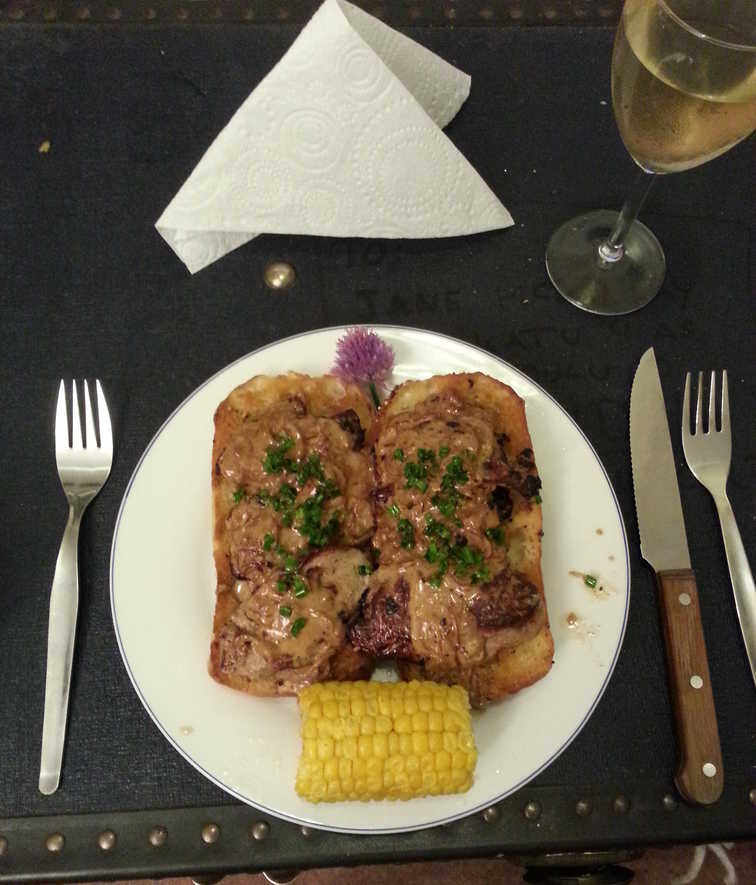
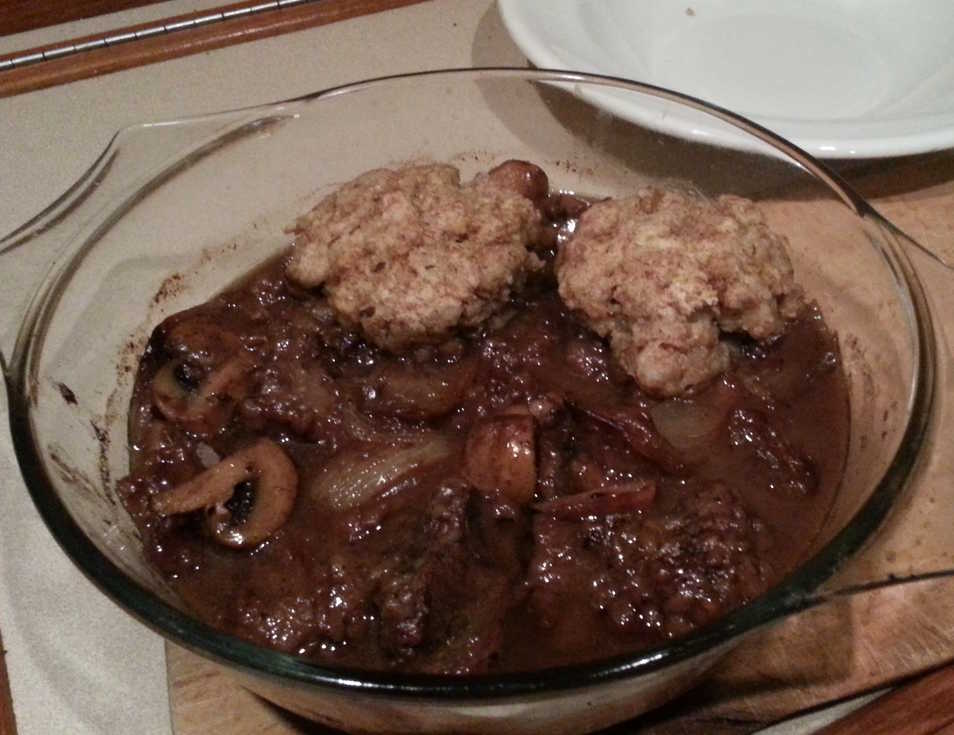
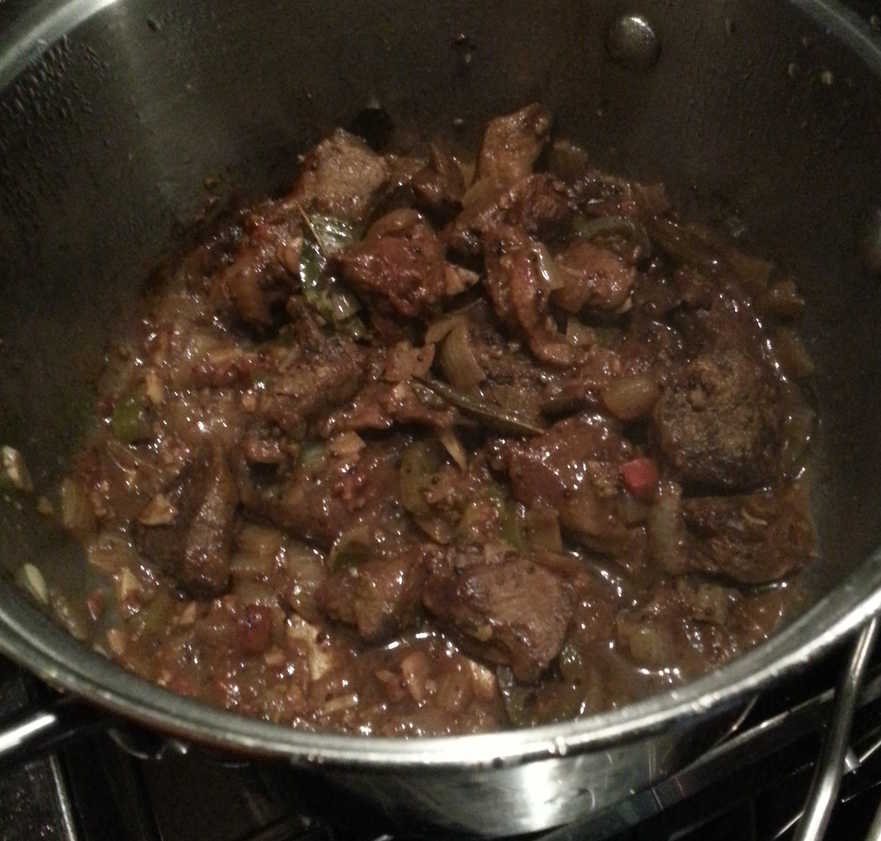
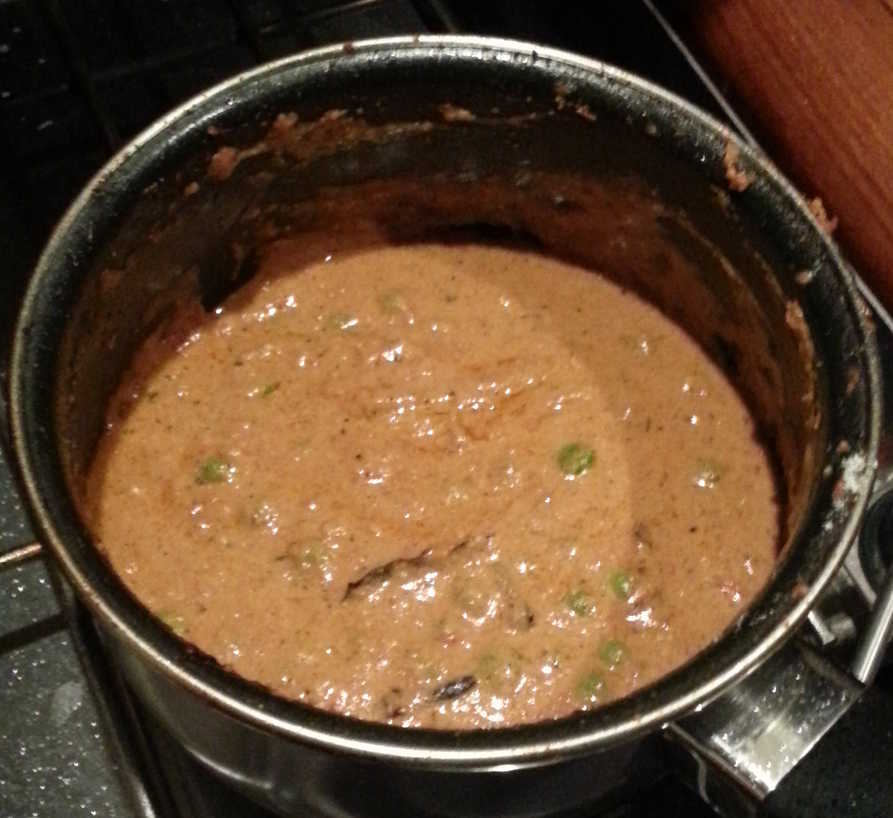
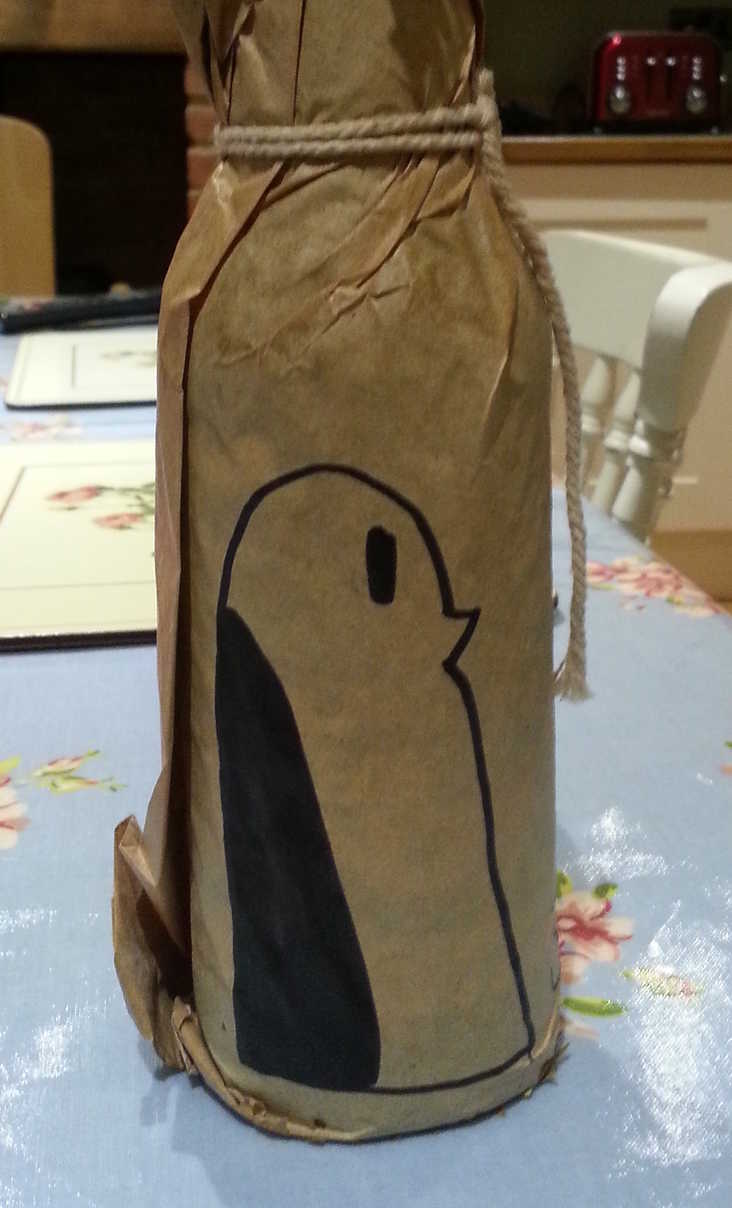
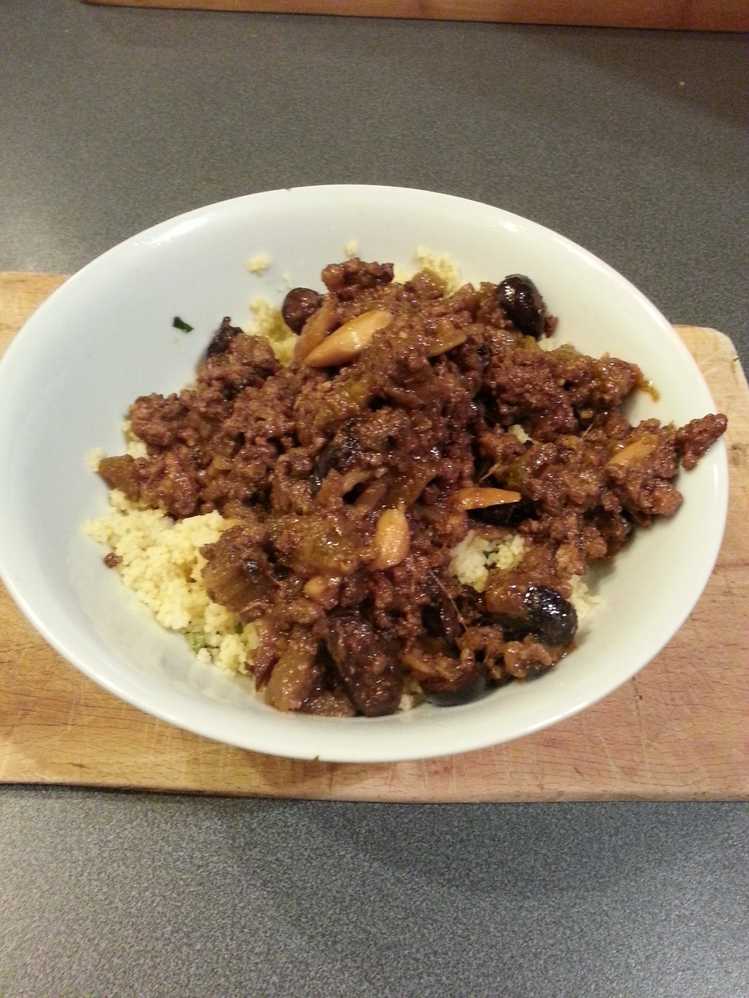
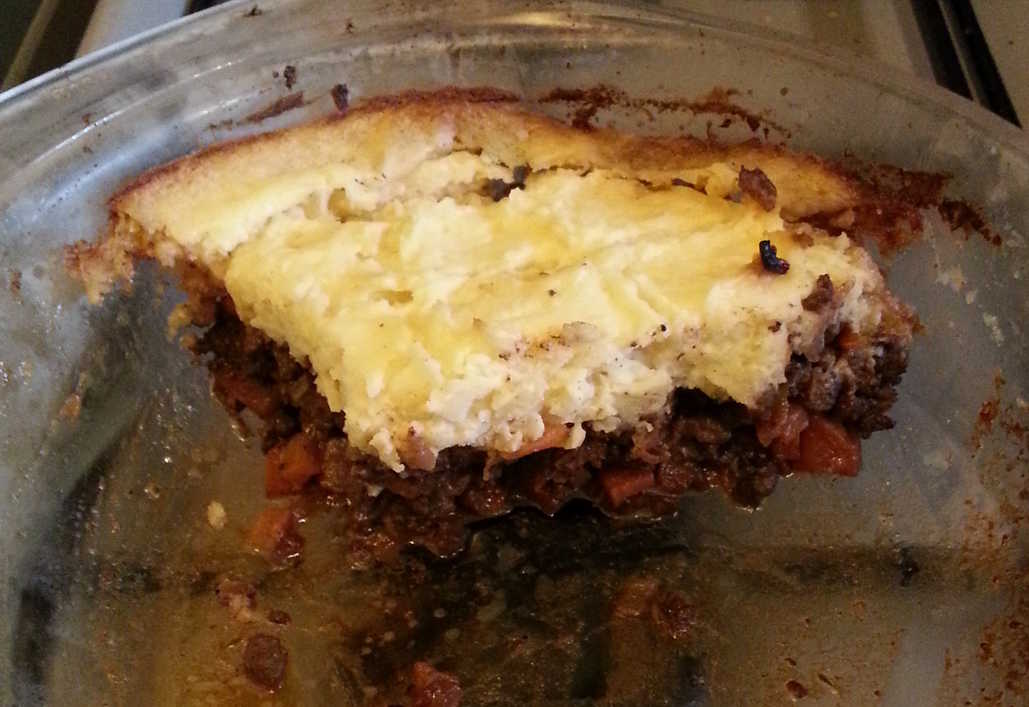

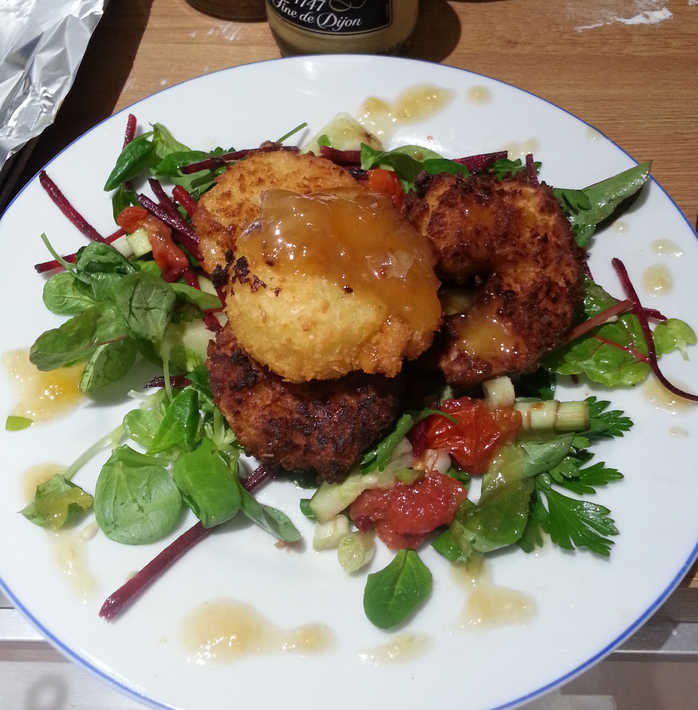
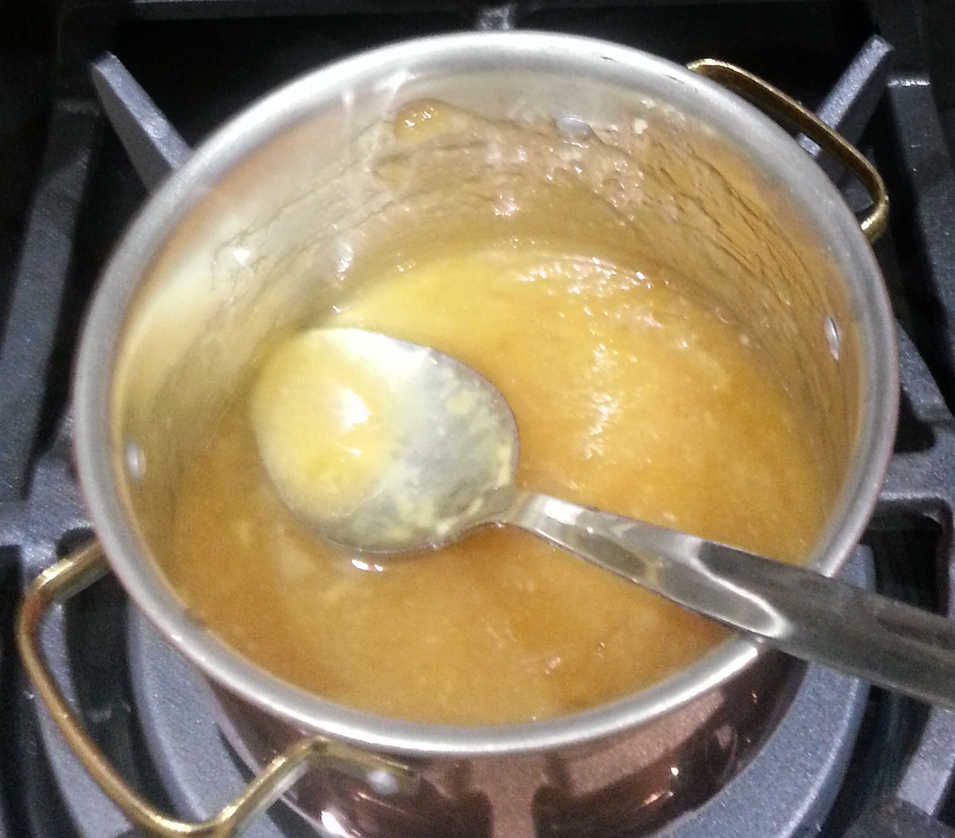
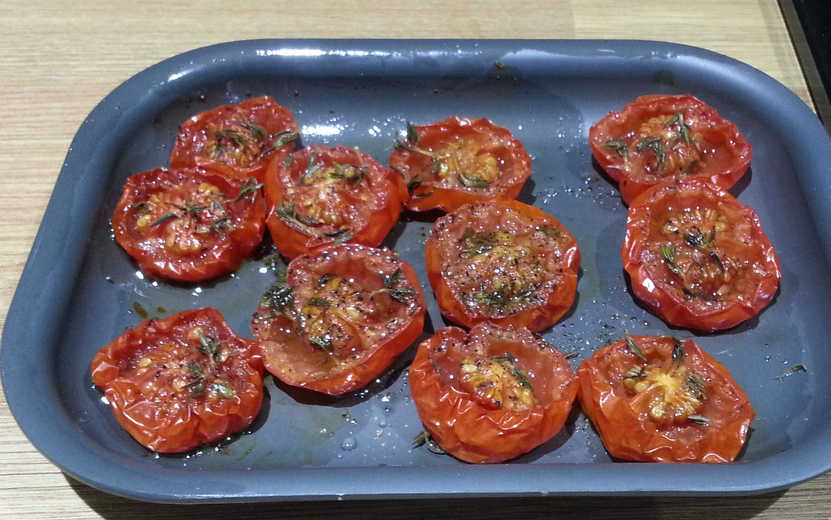
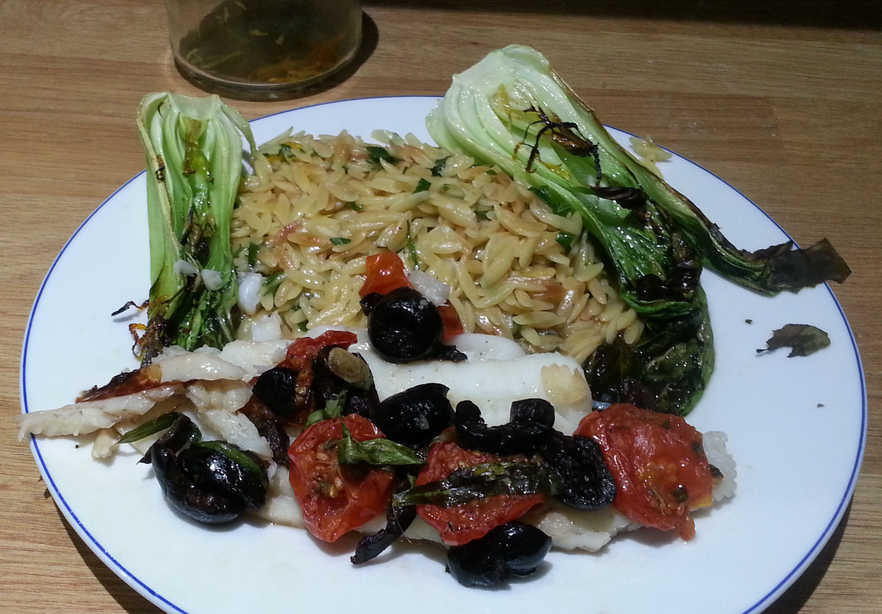
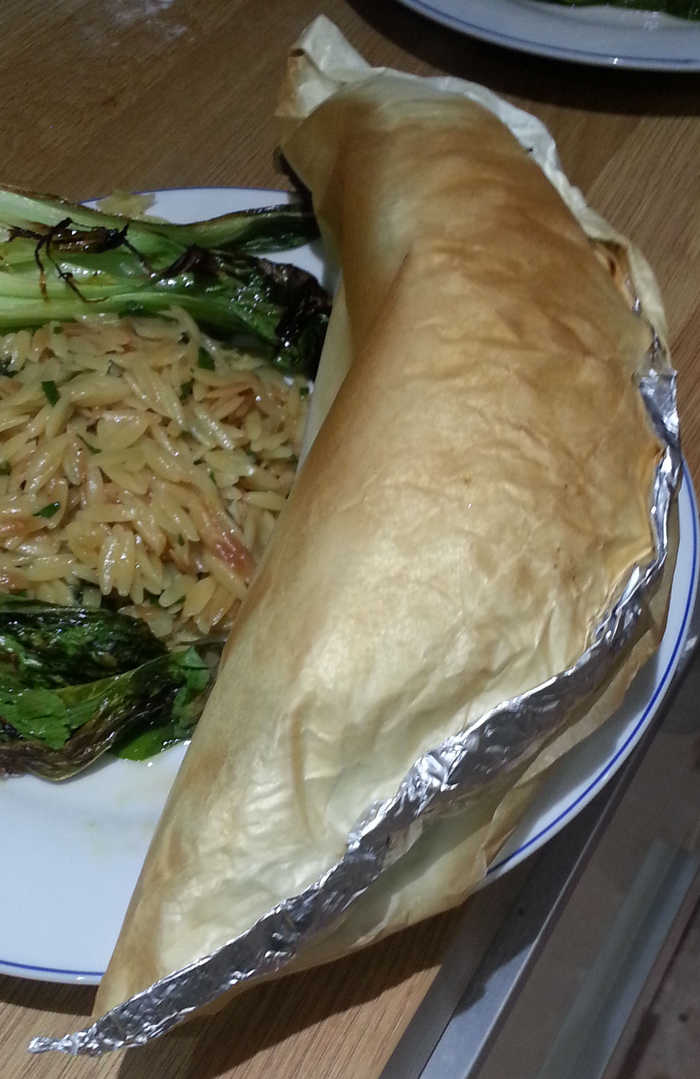
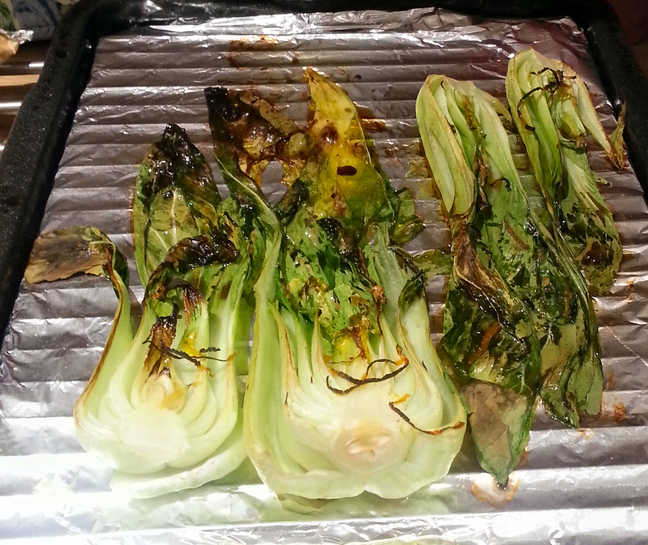


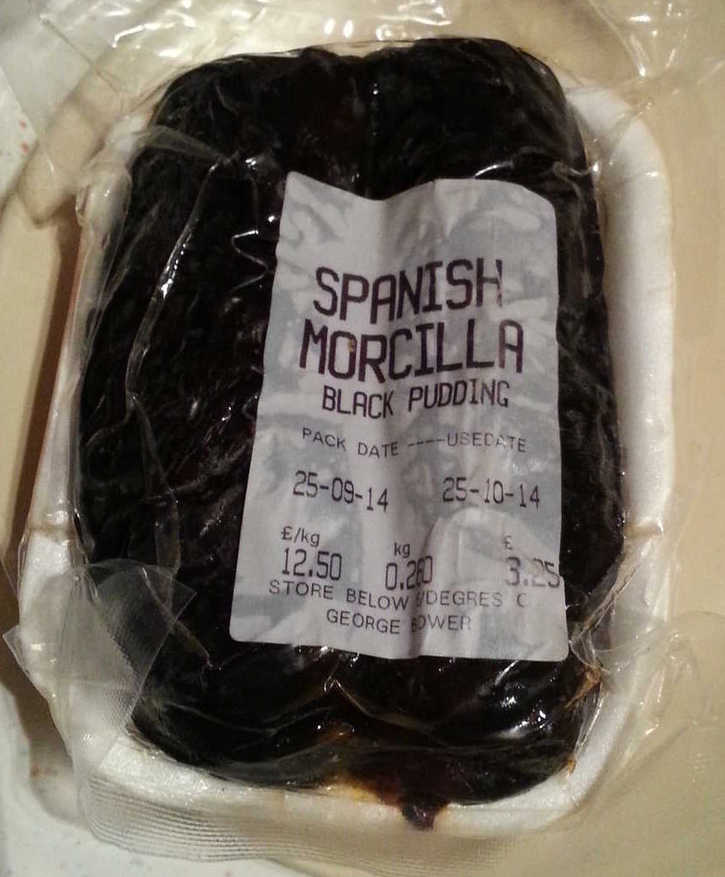
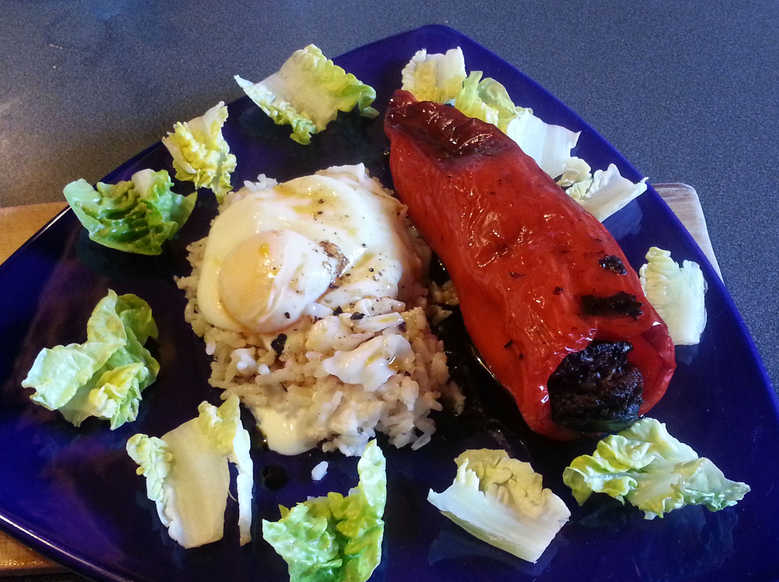
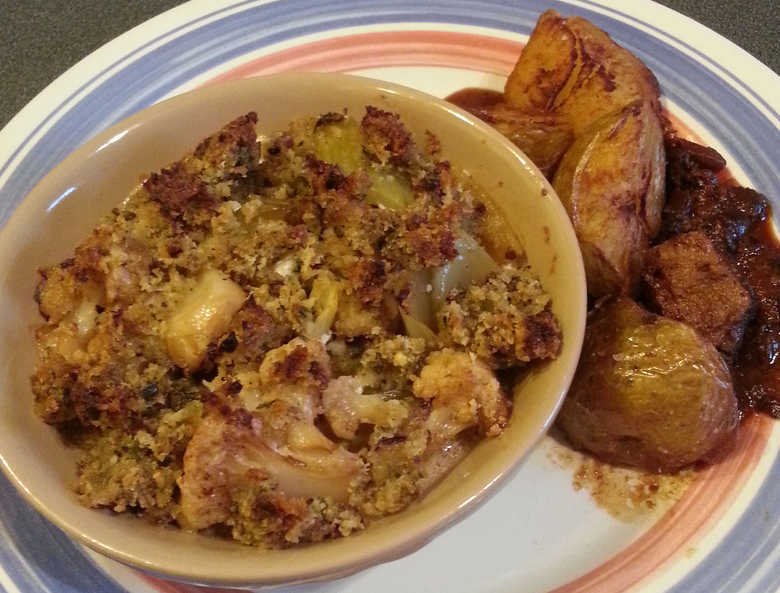

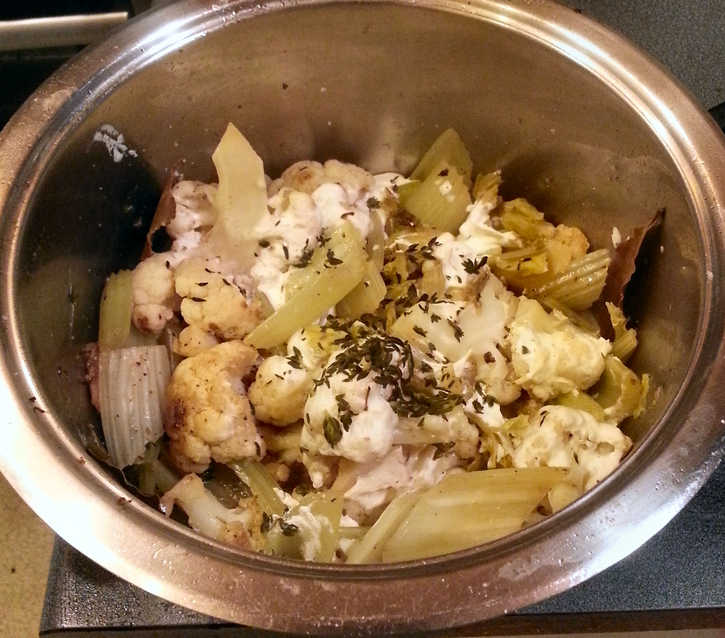

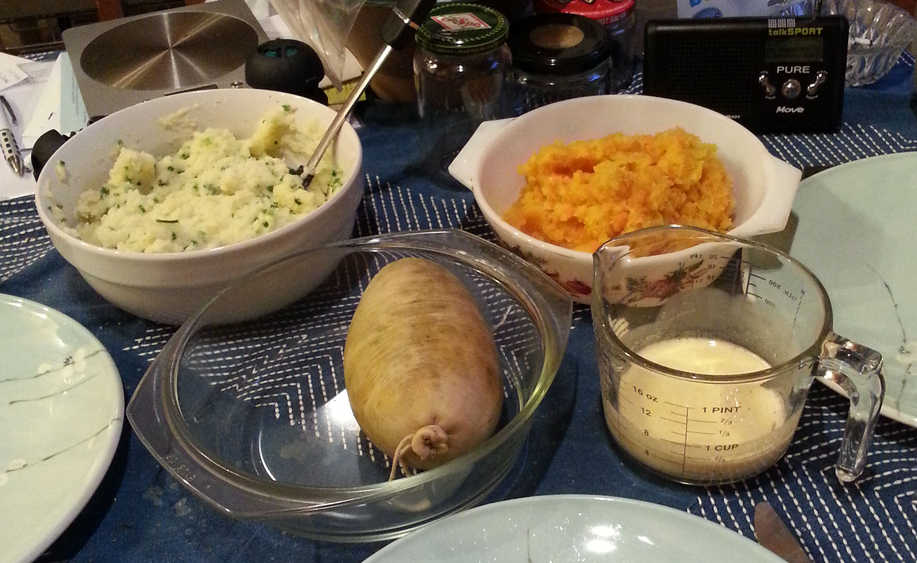



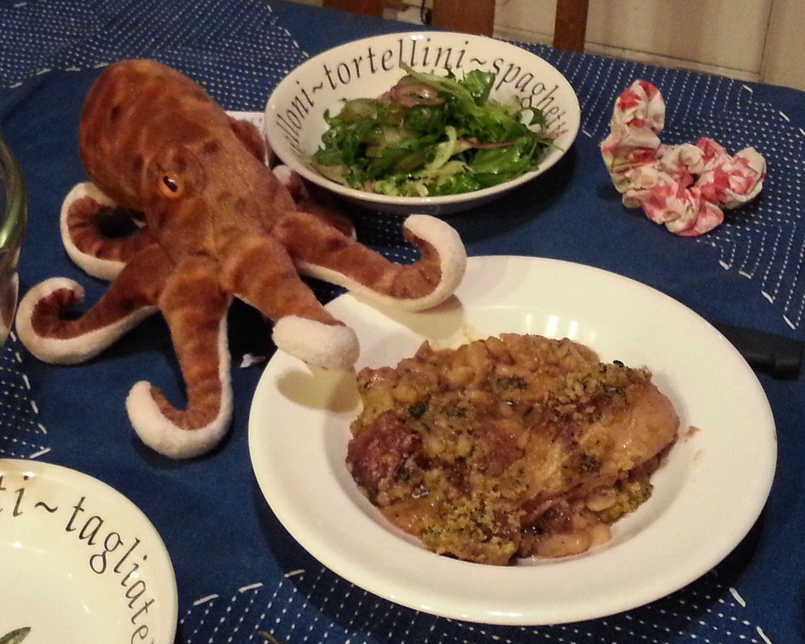
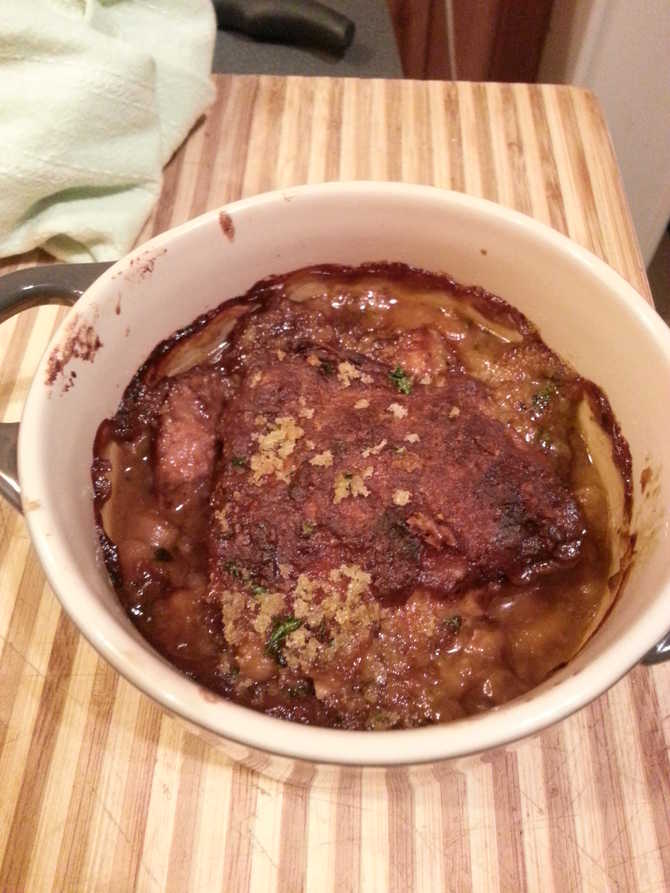
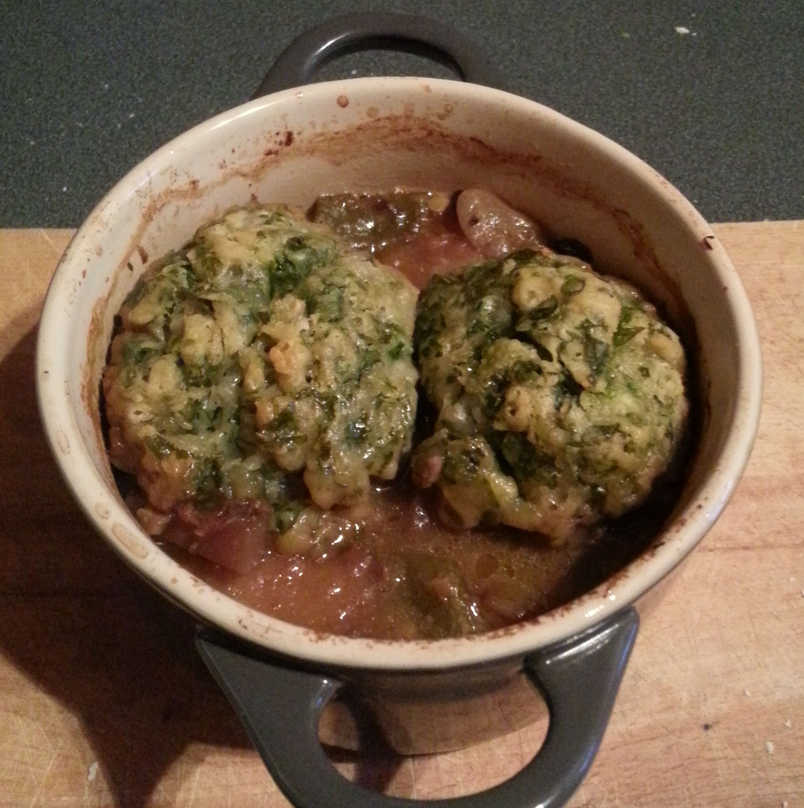

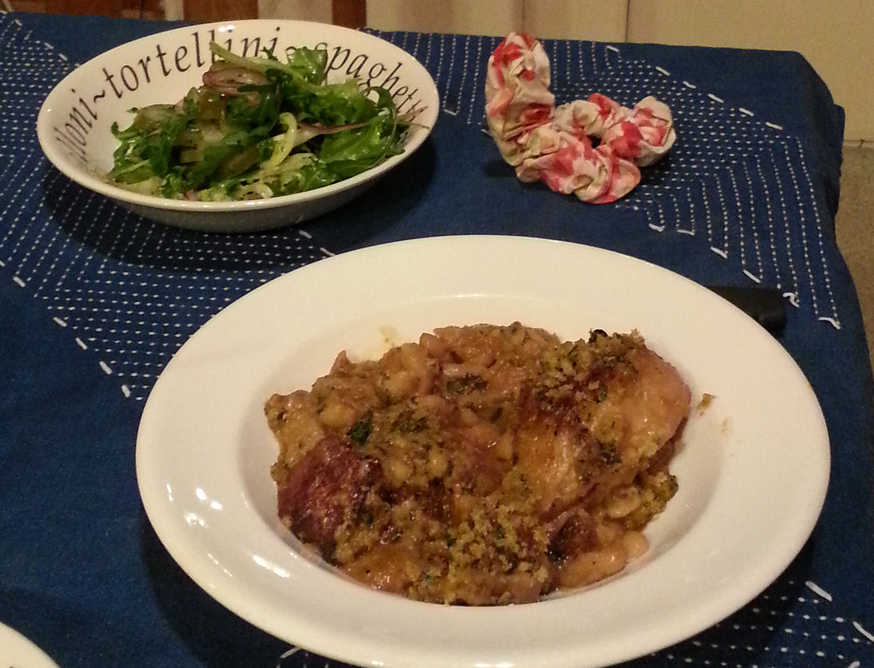
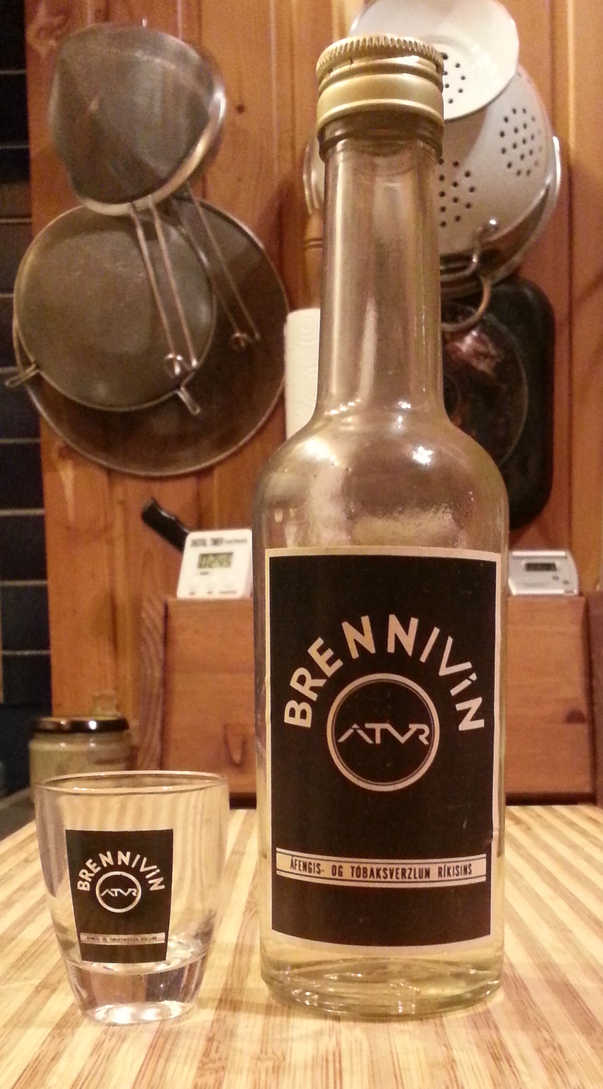


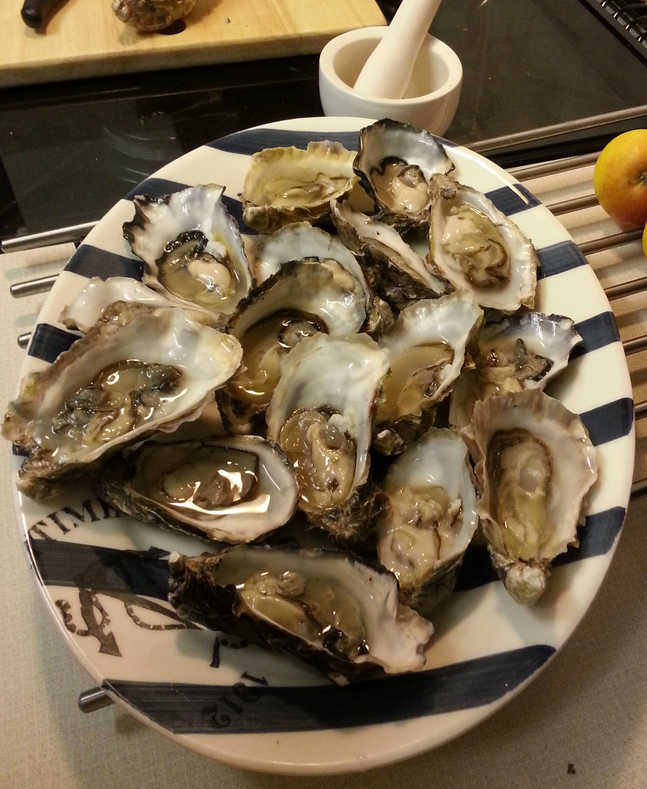
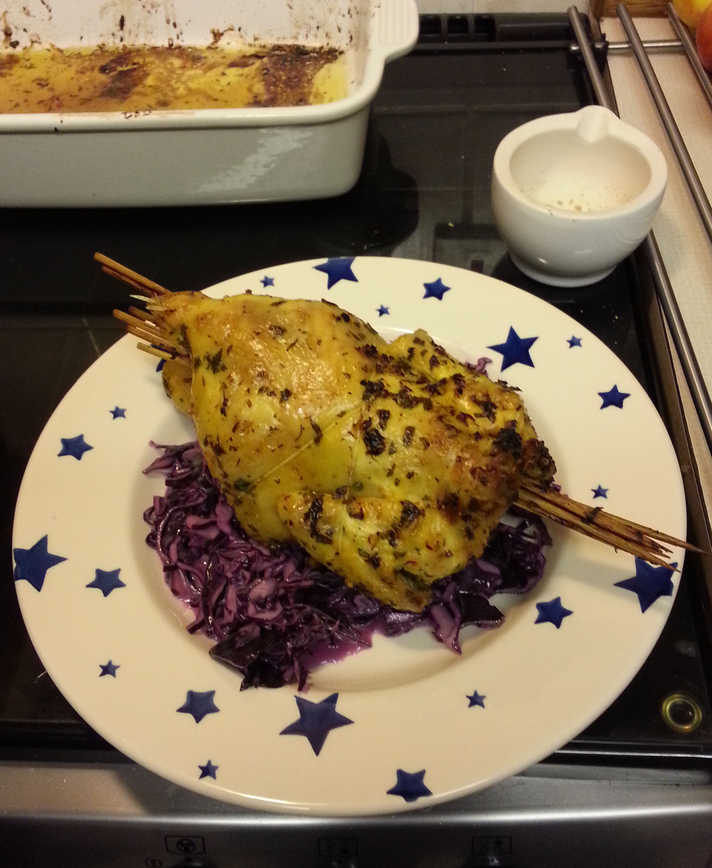
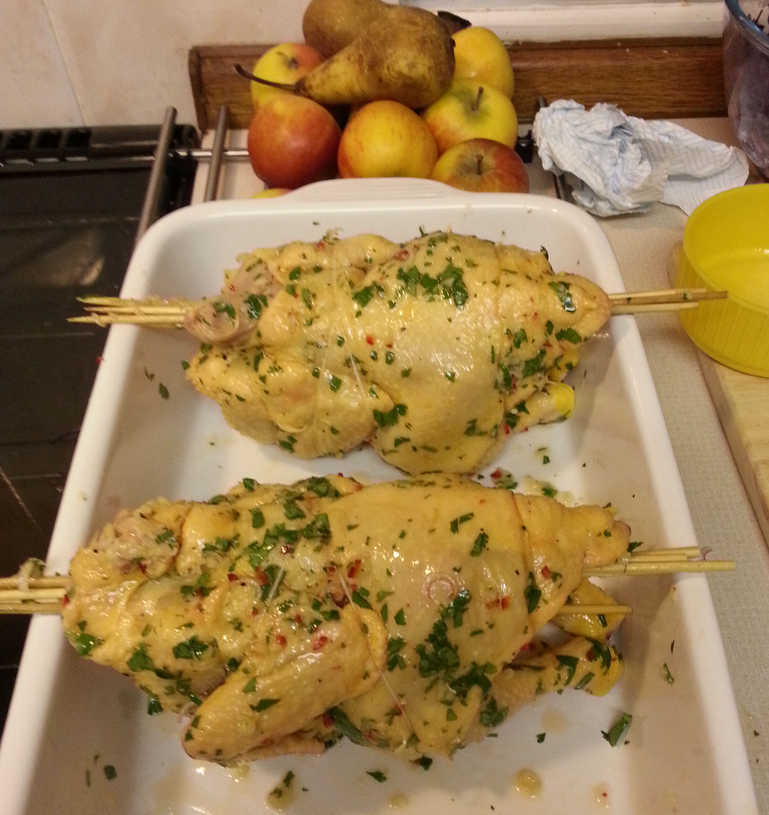
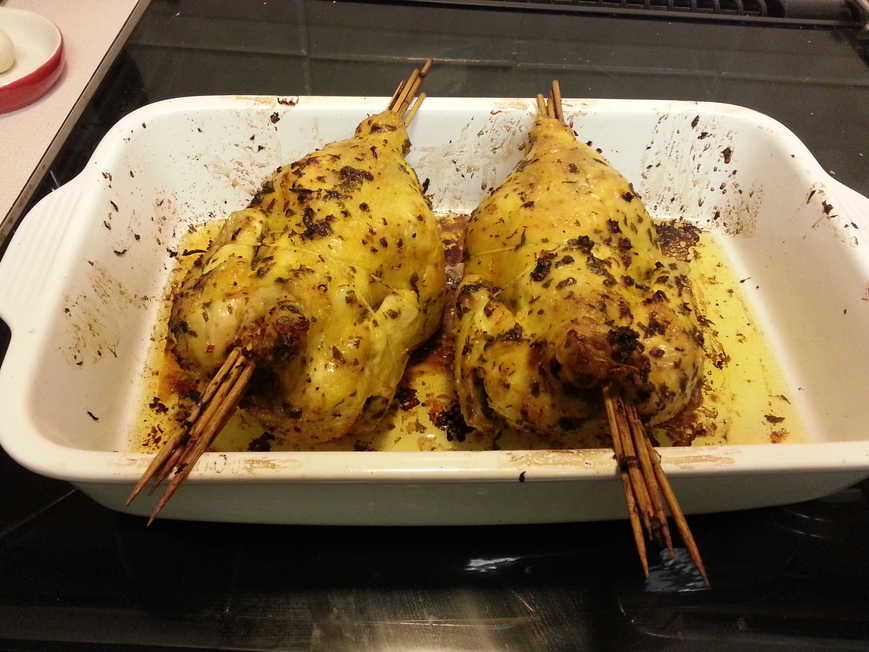
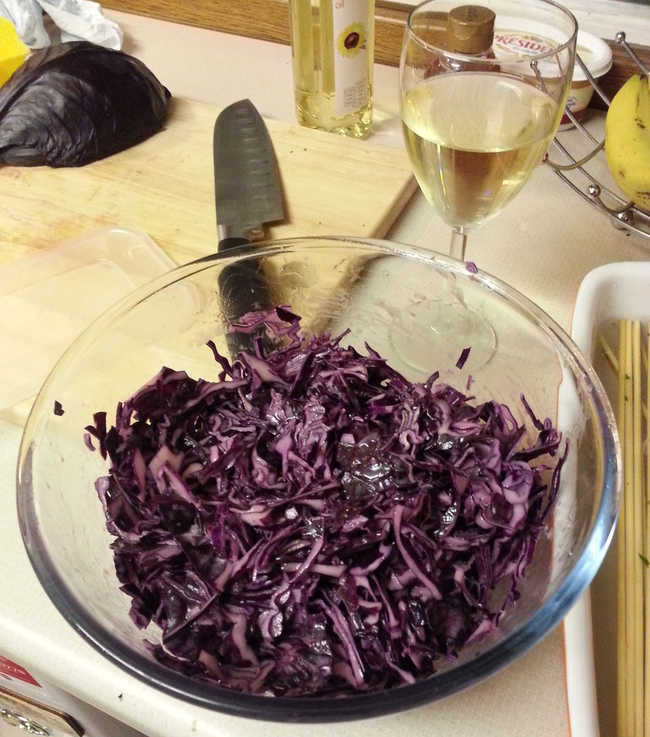

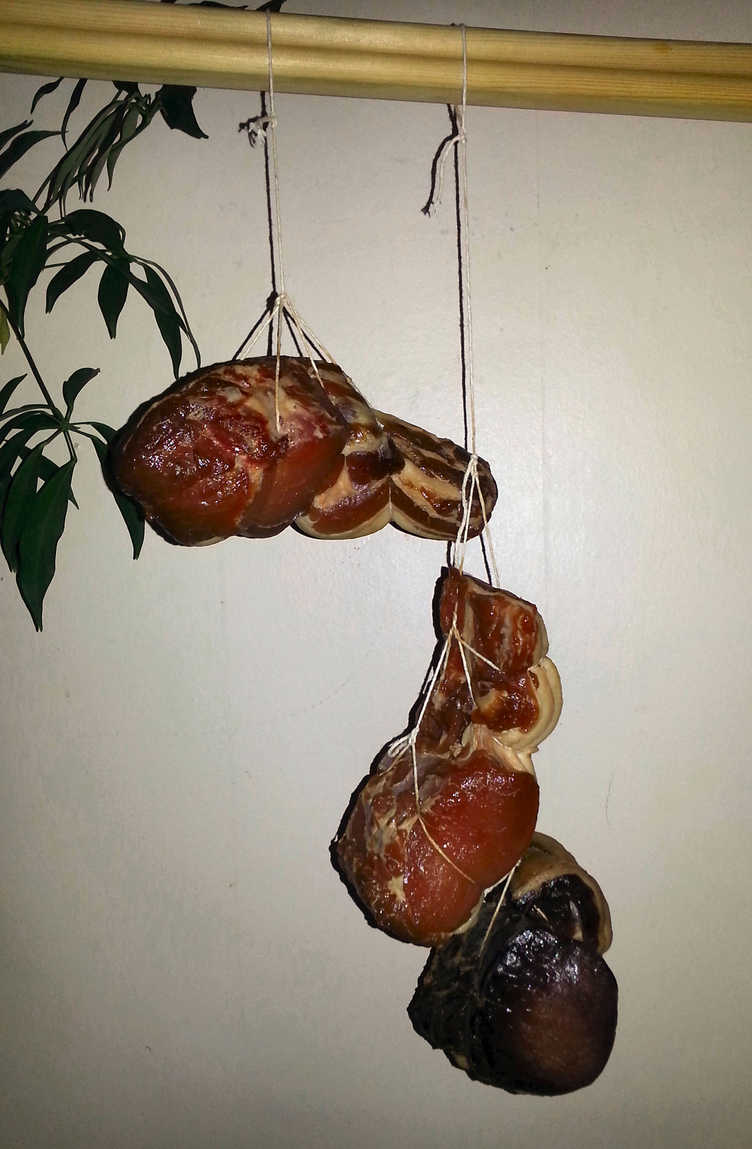
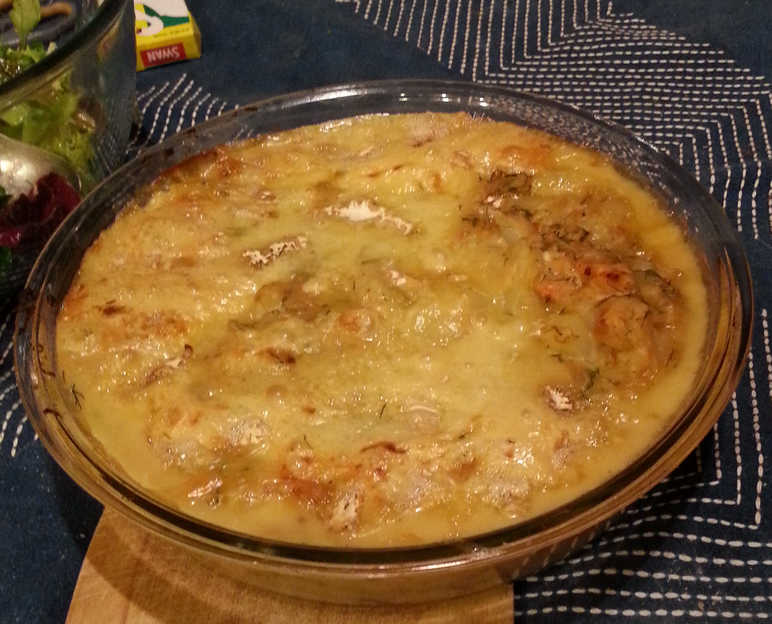

Be sure to add any juices from the sitting duck livers to the sauce too. Waste not want not :)